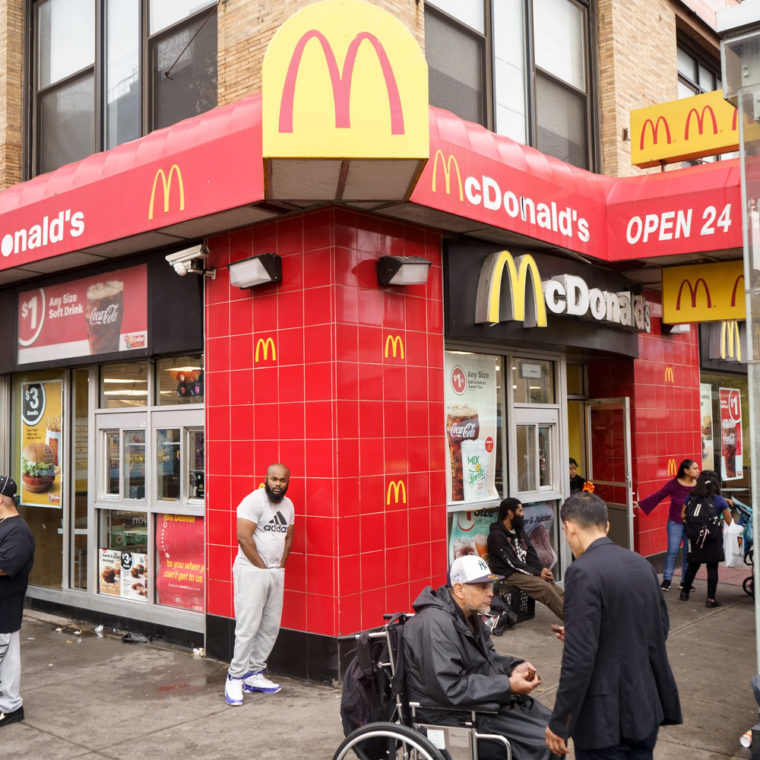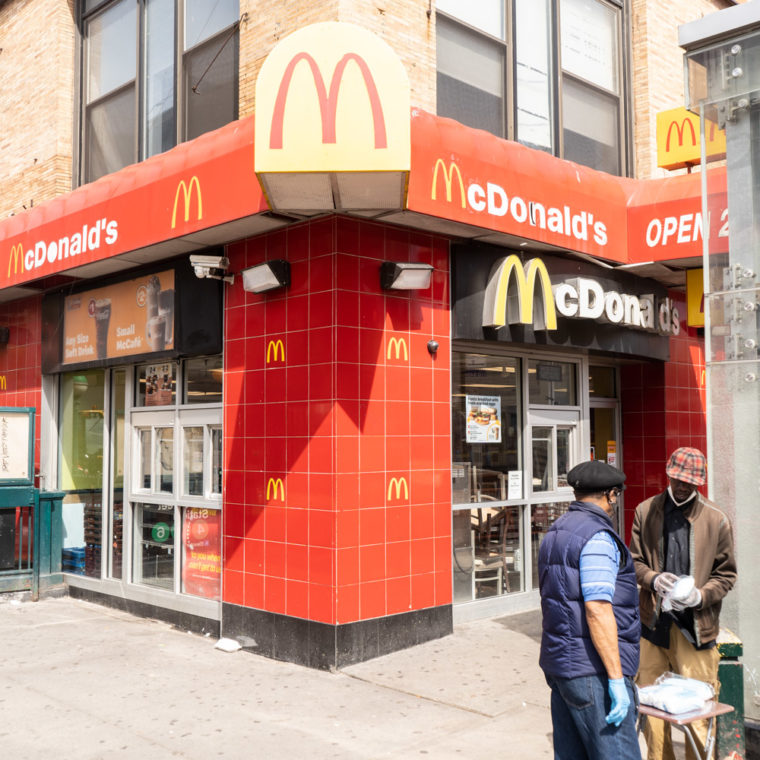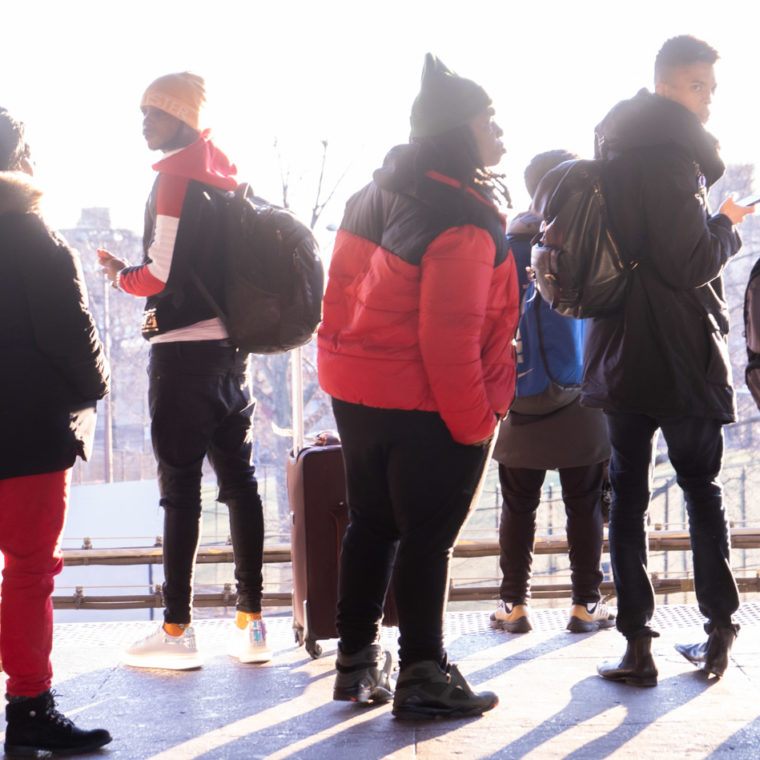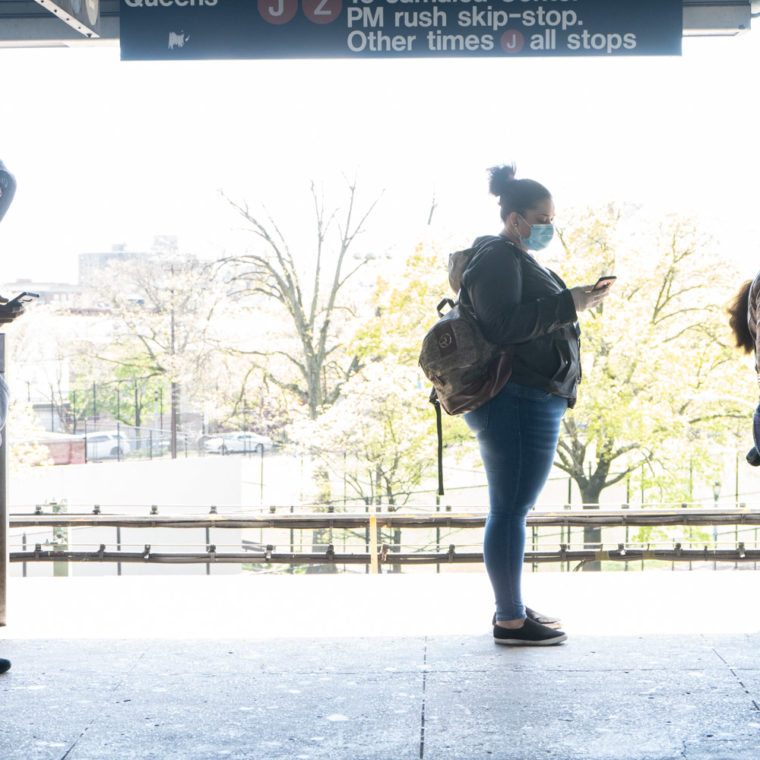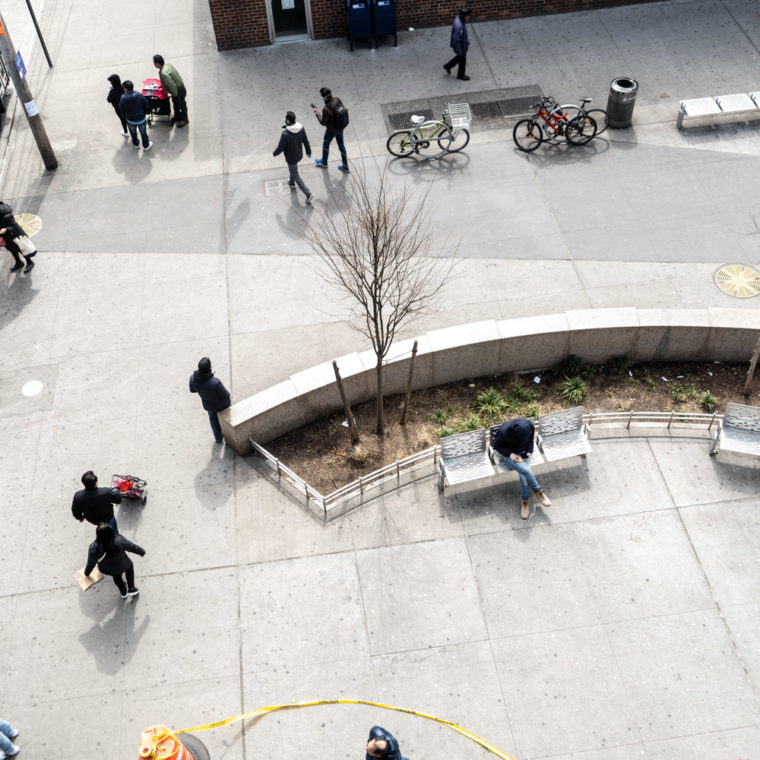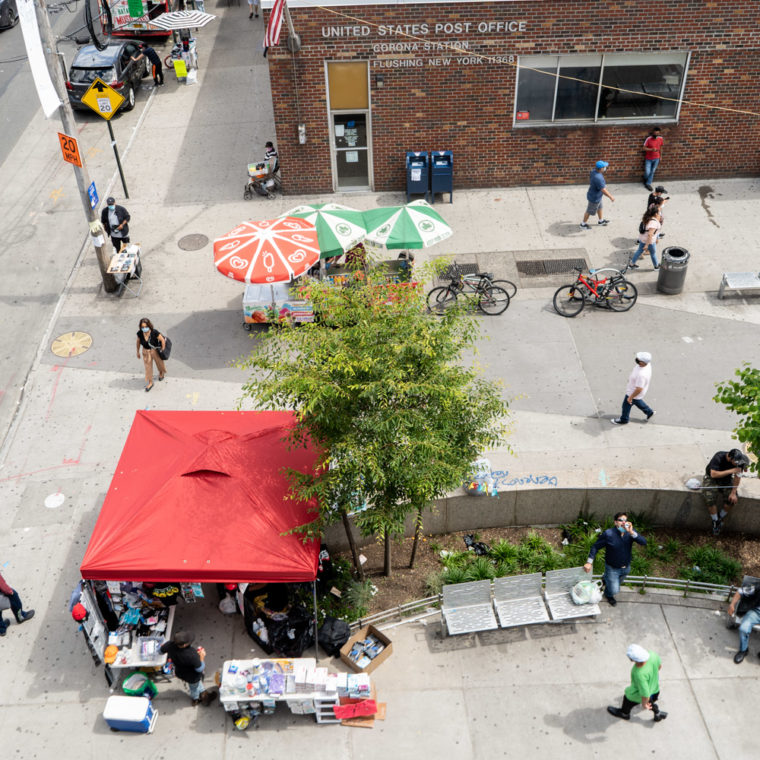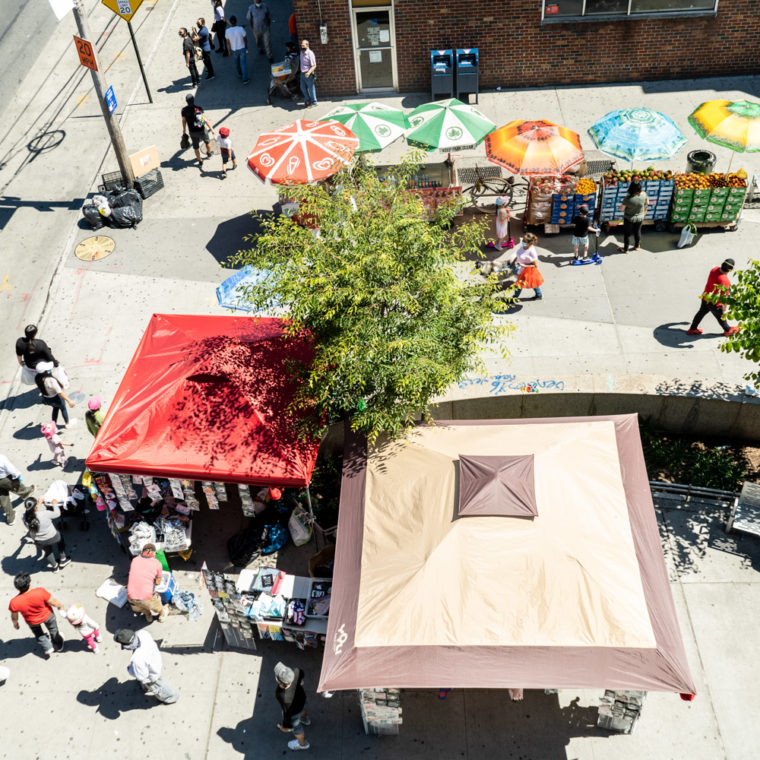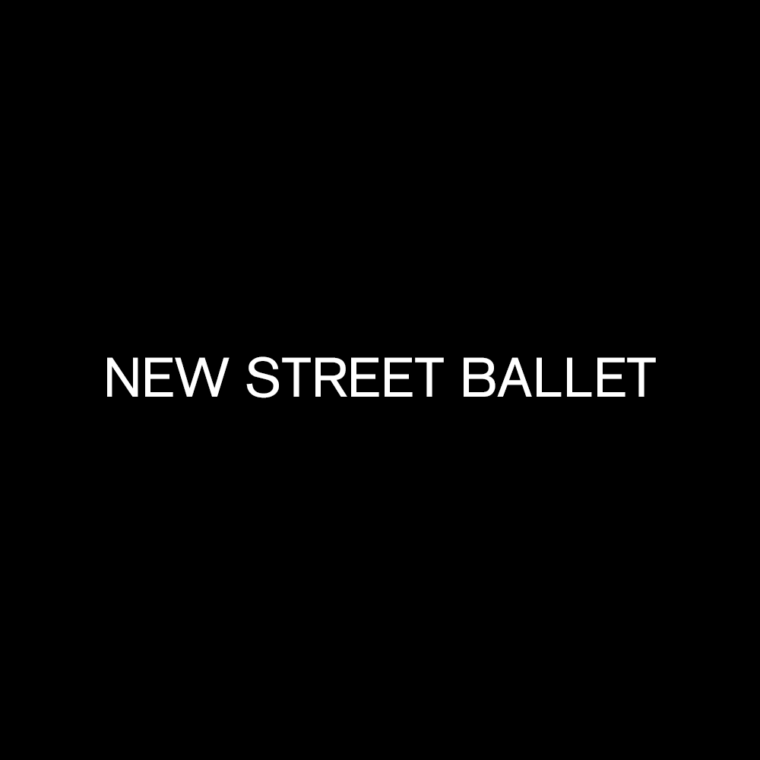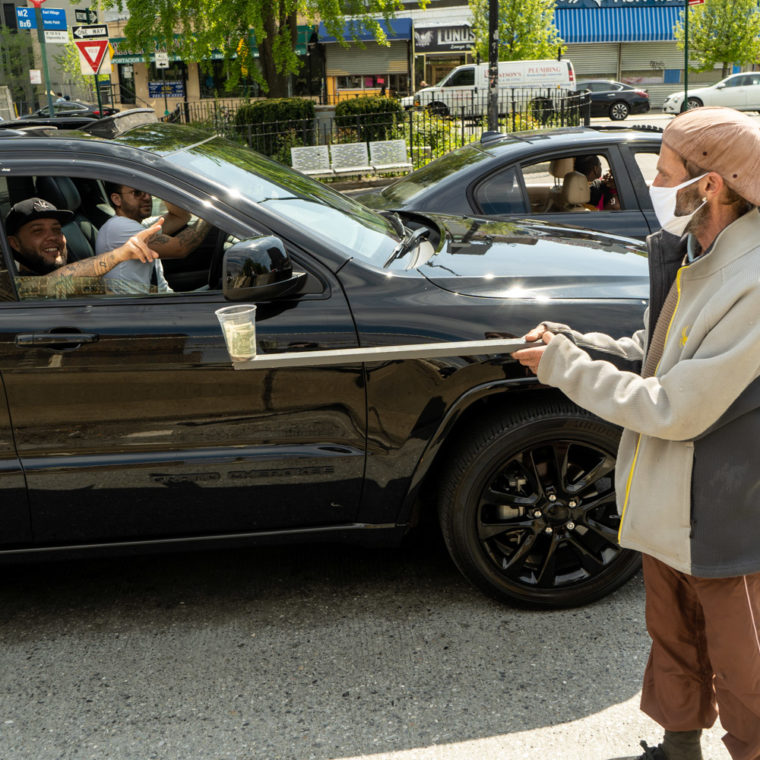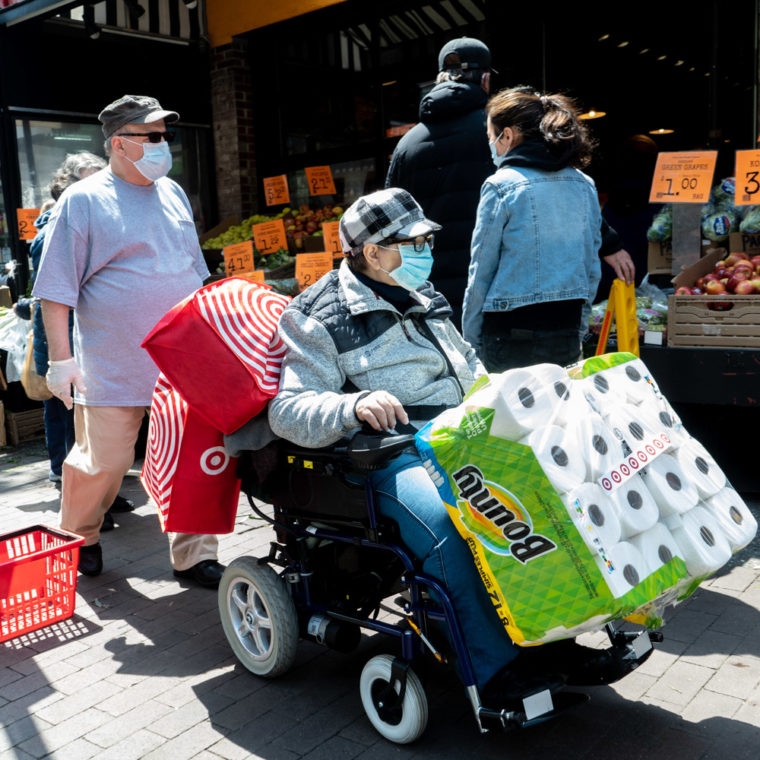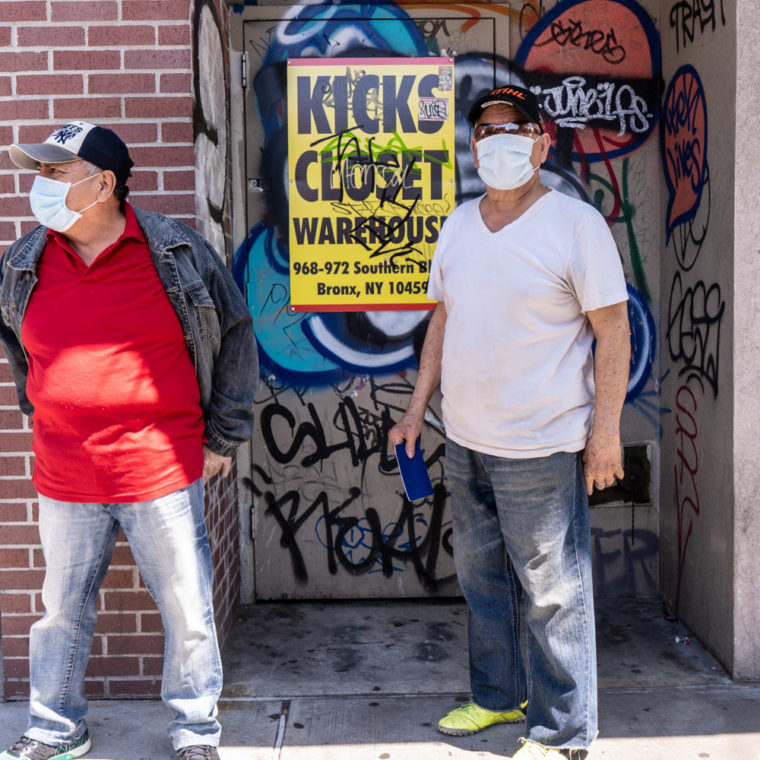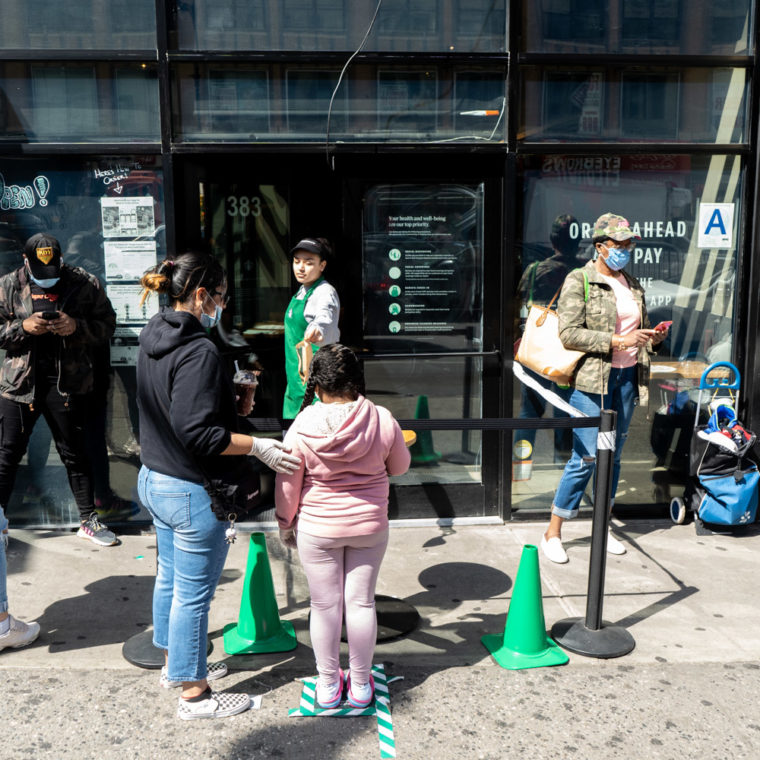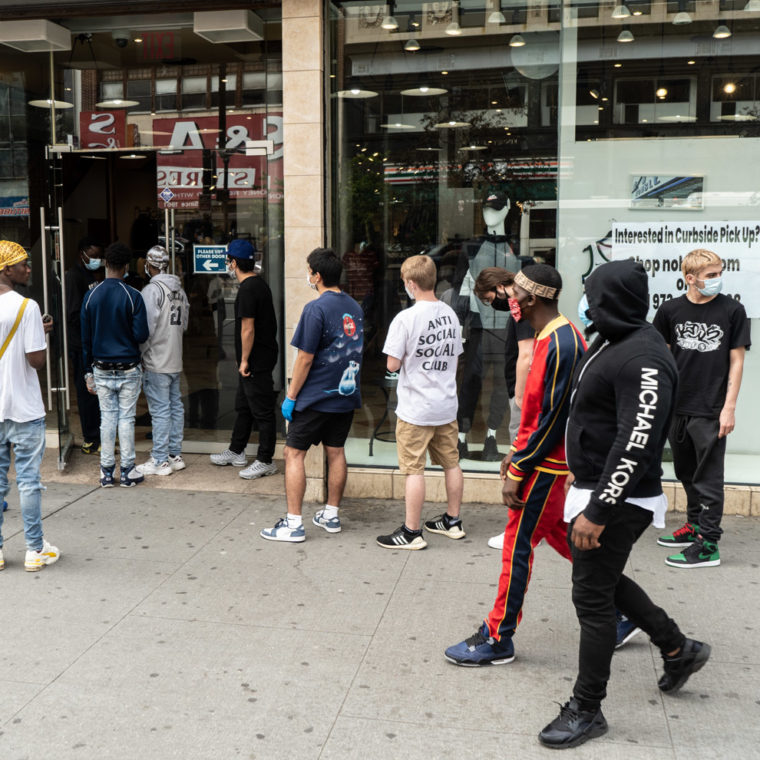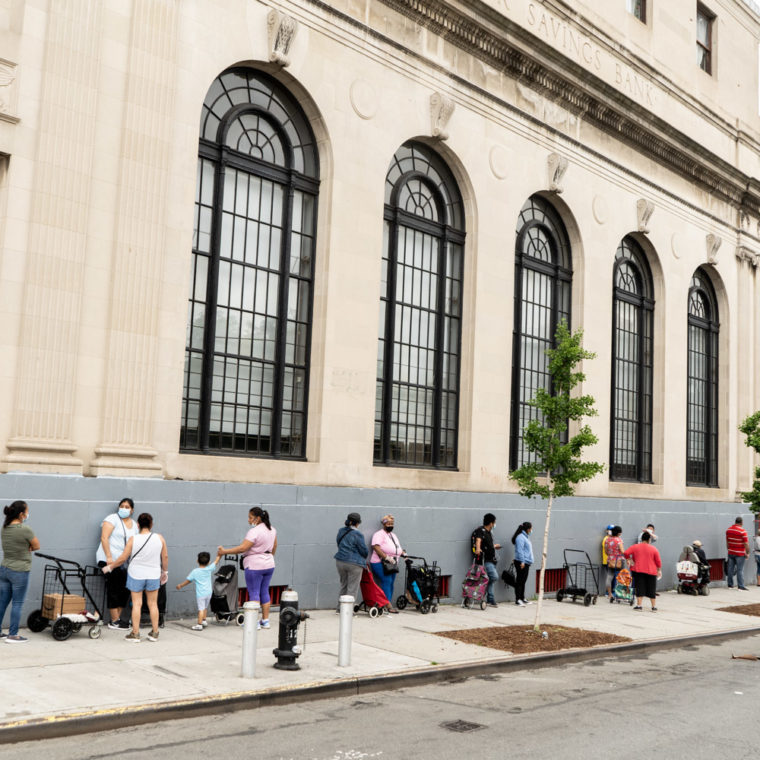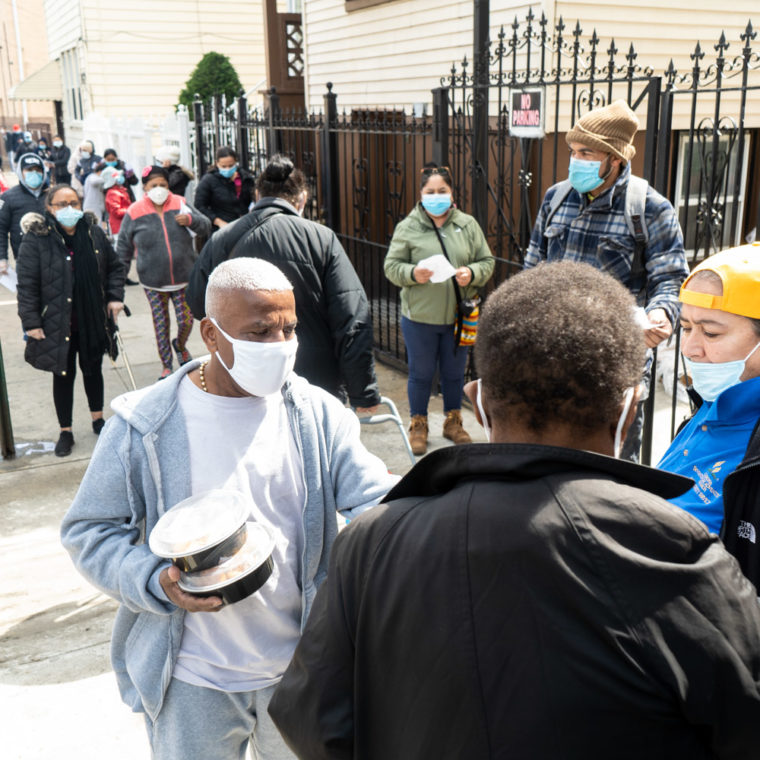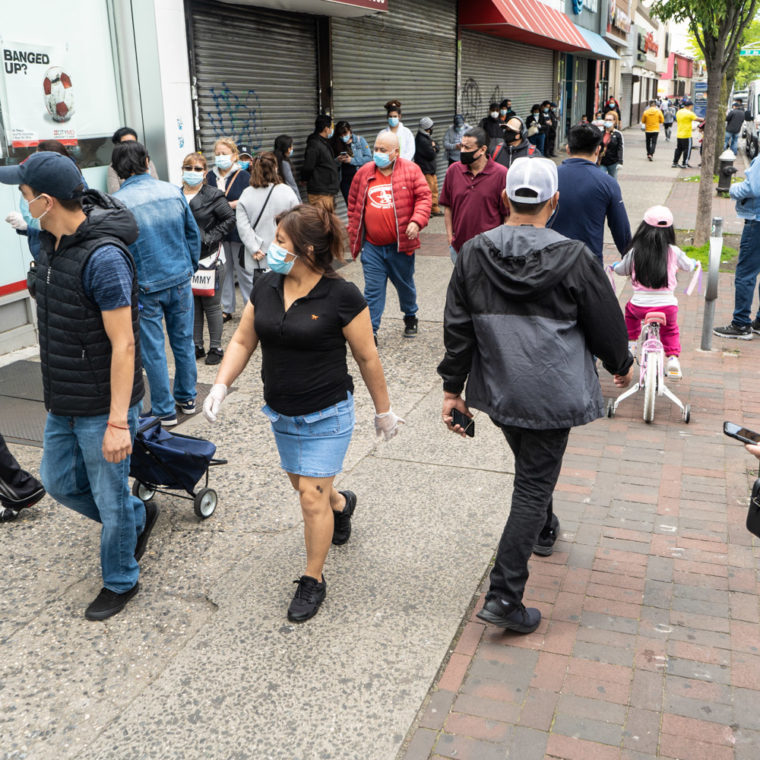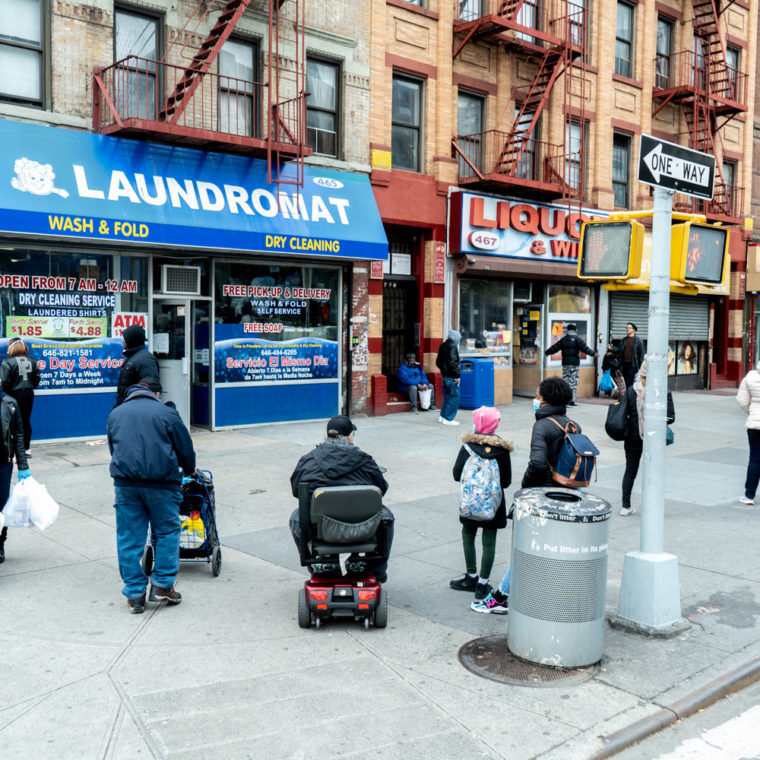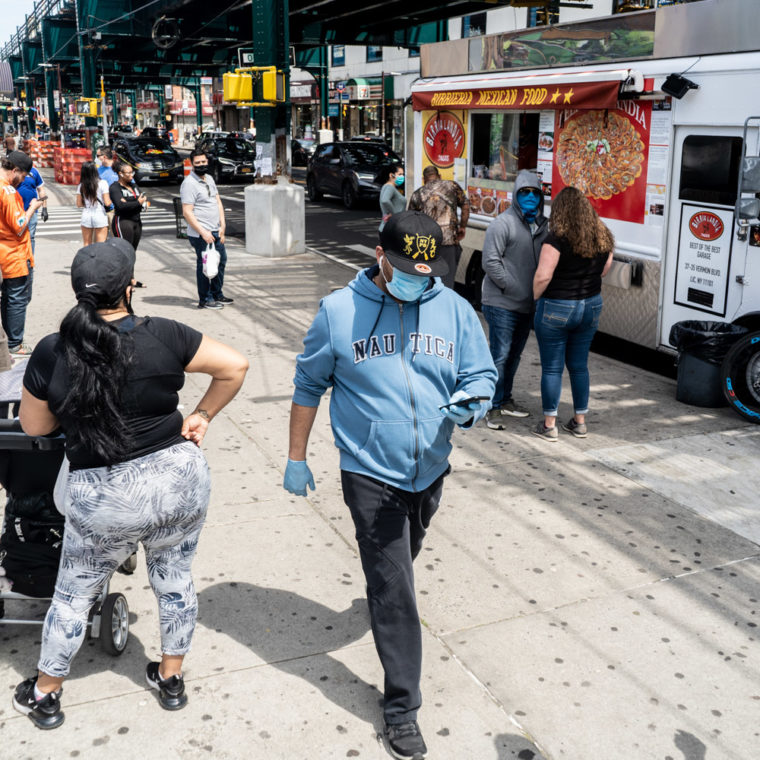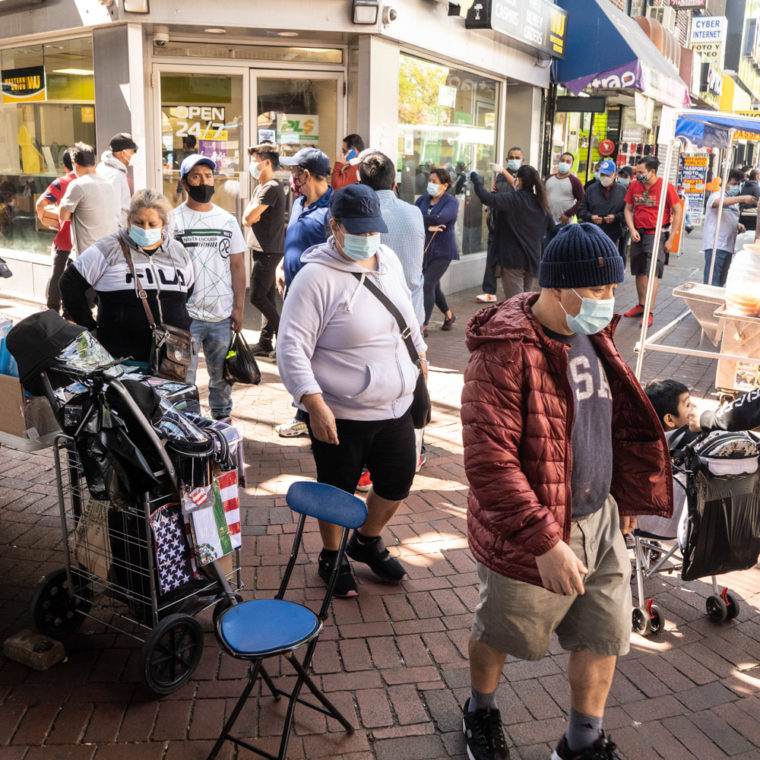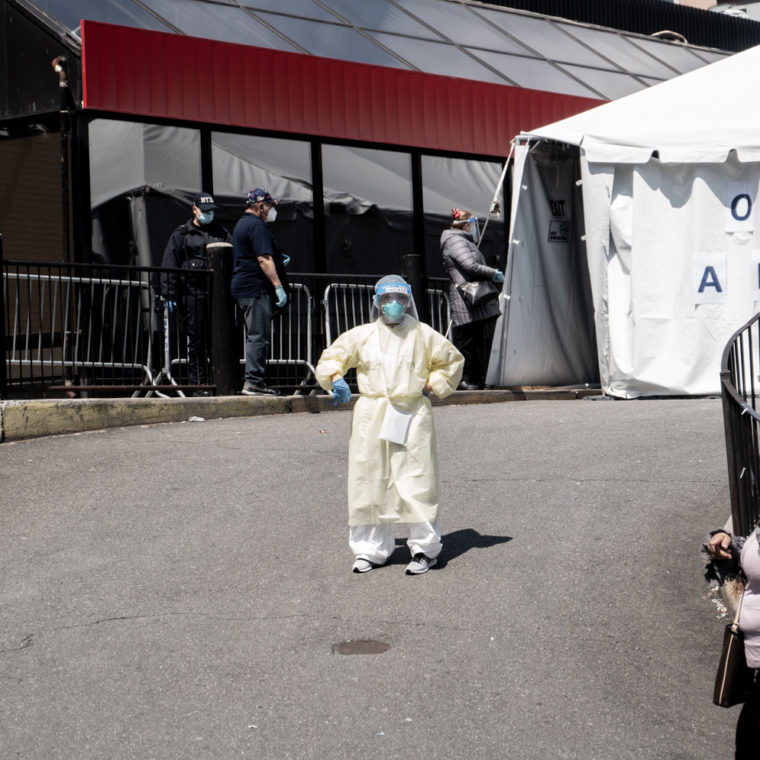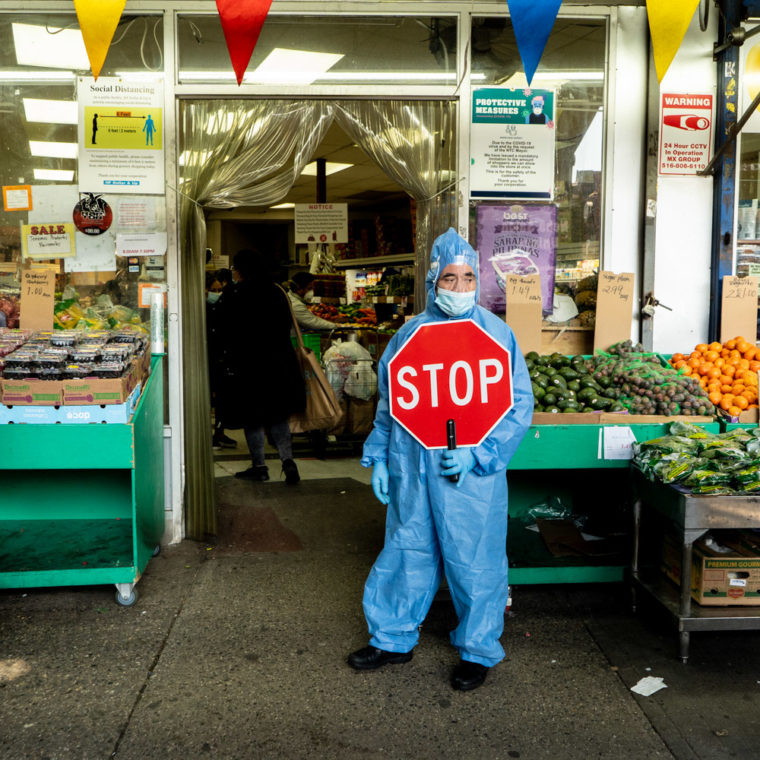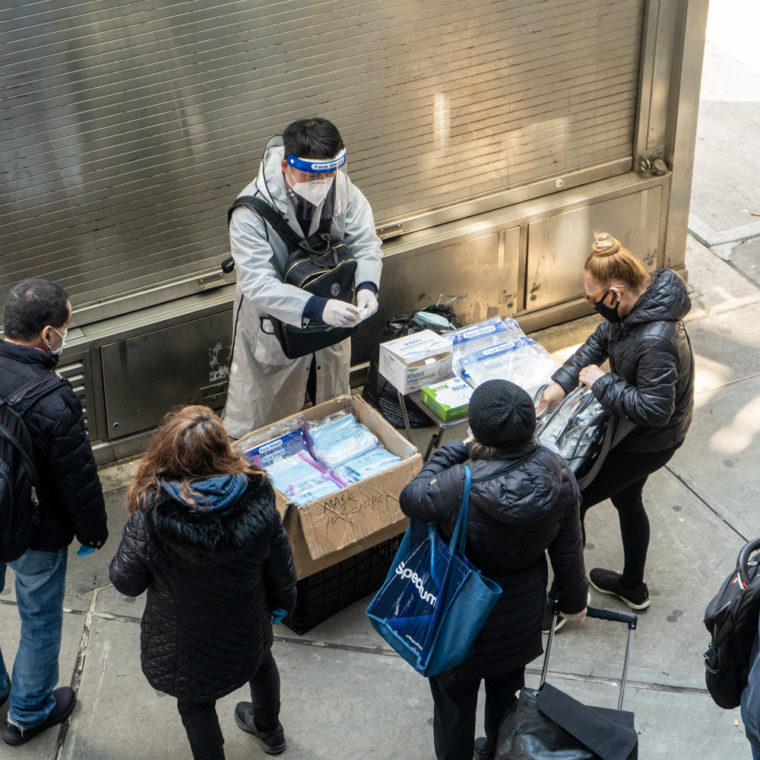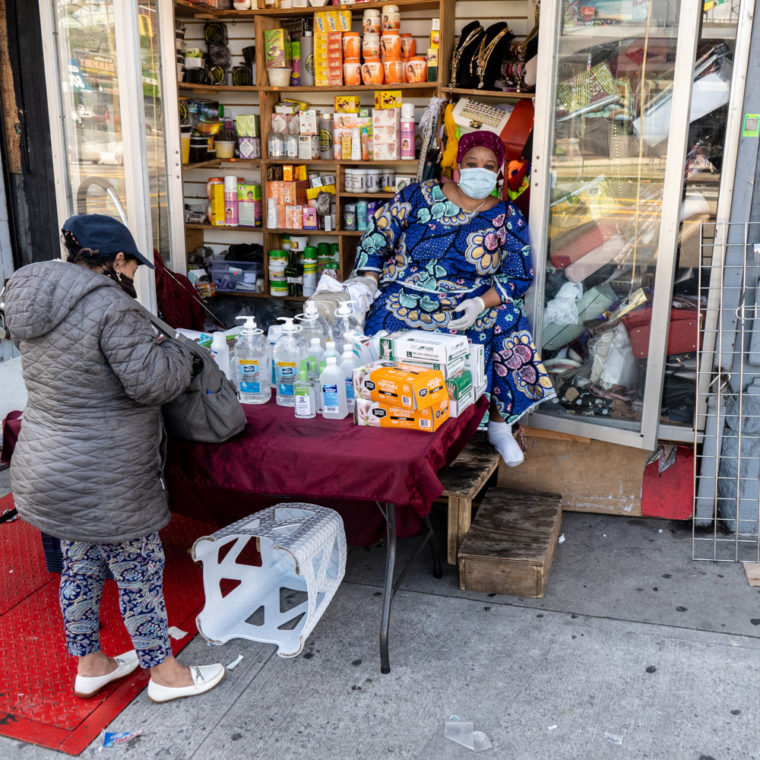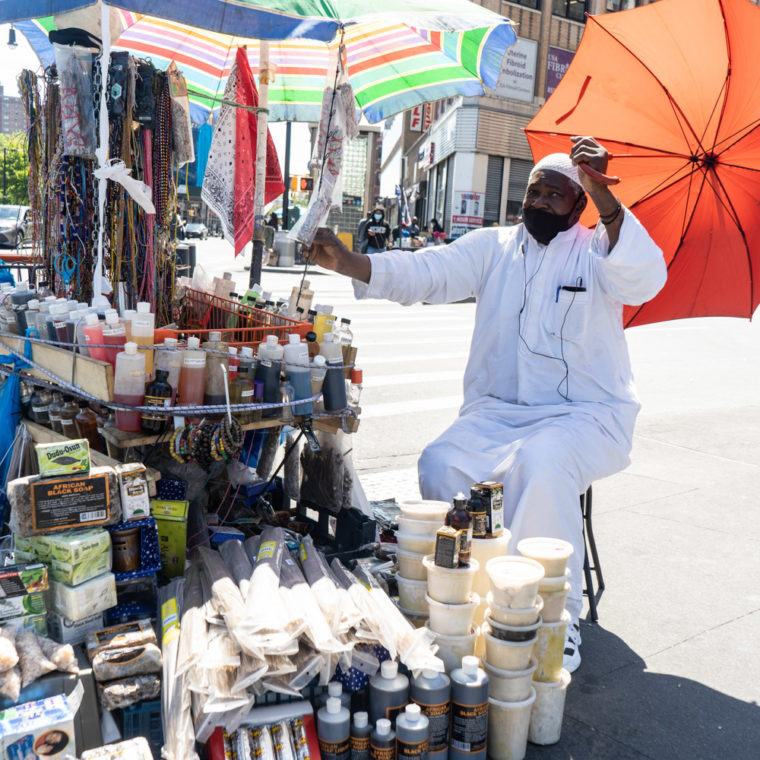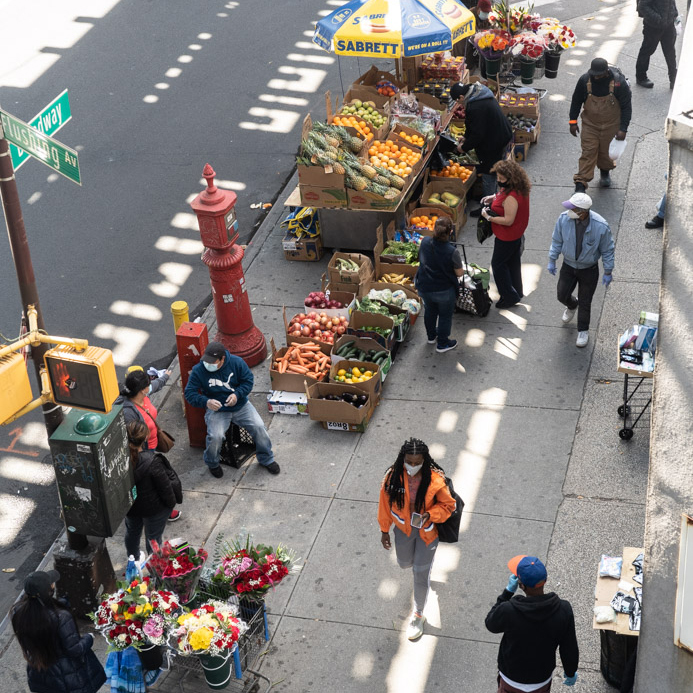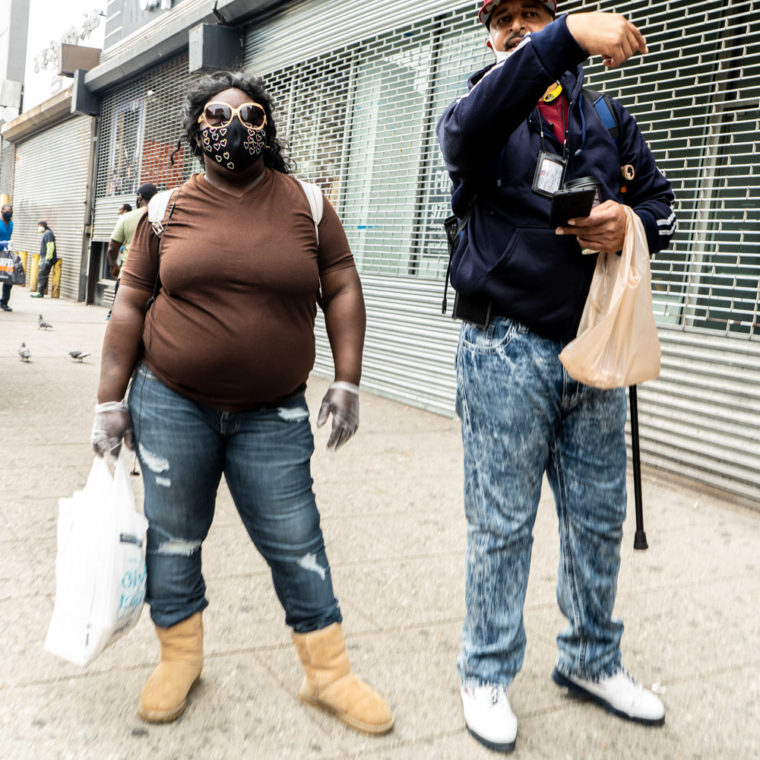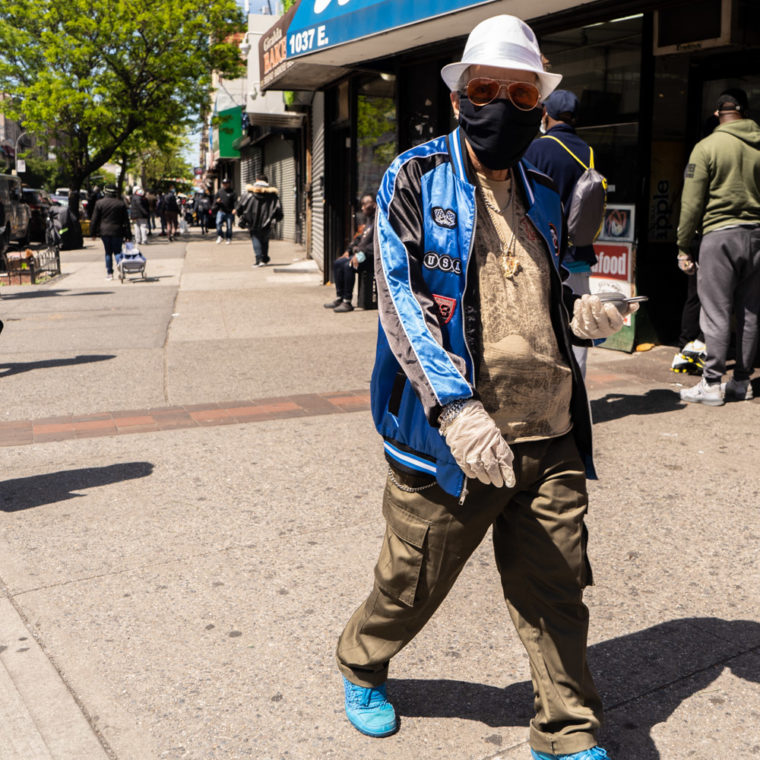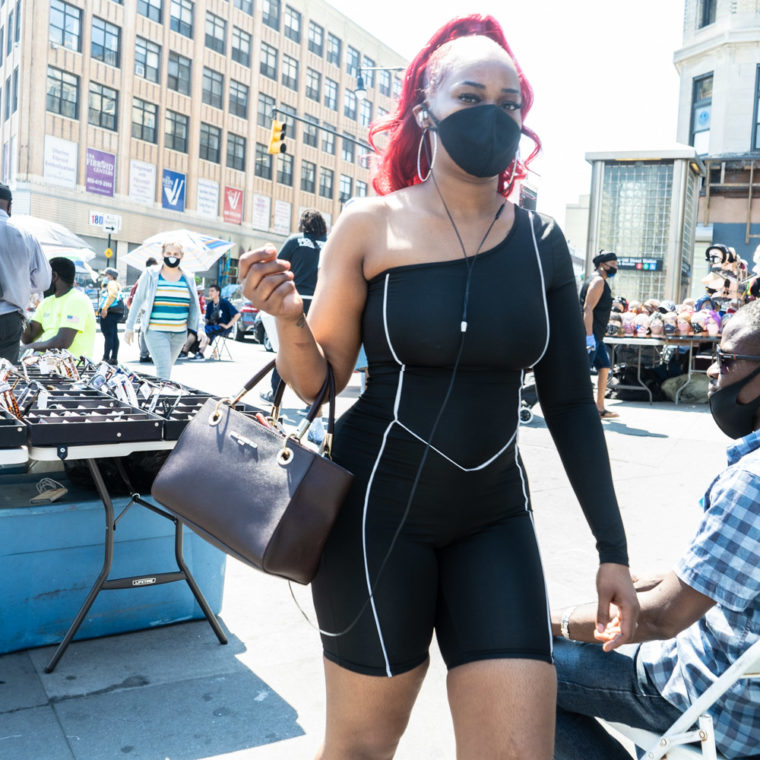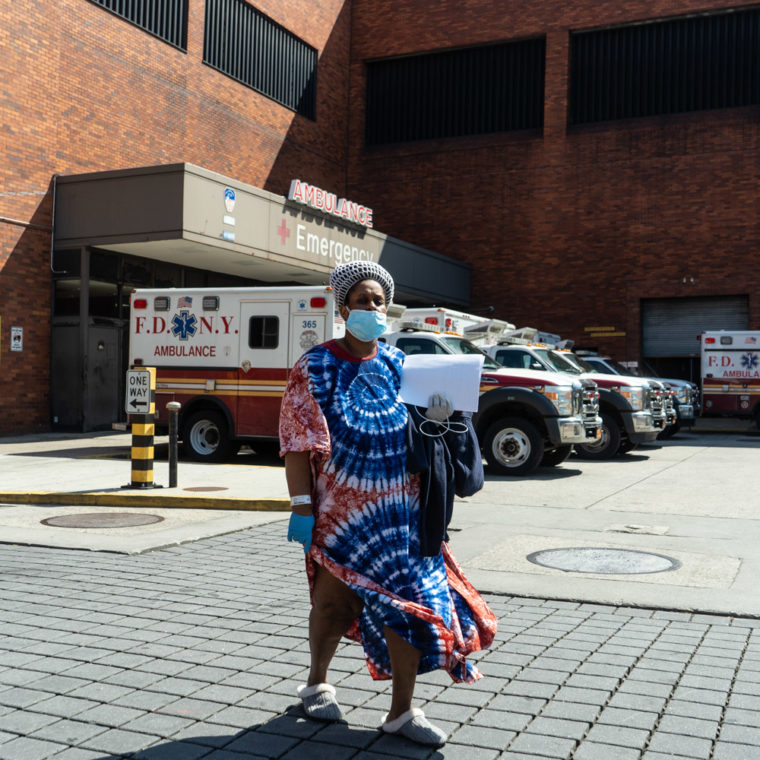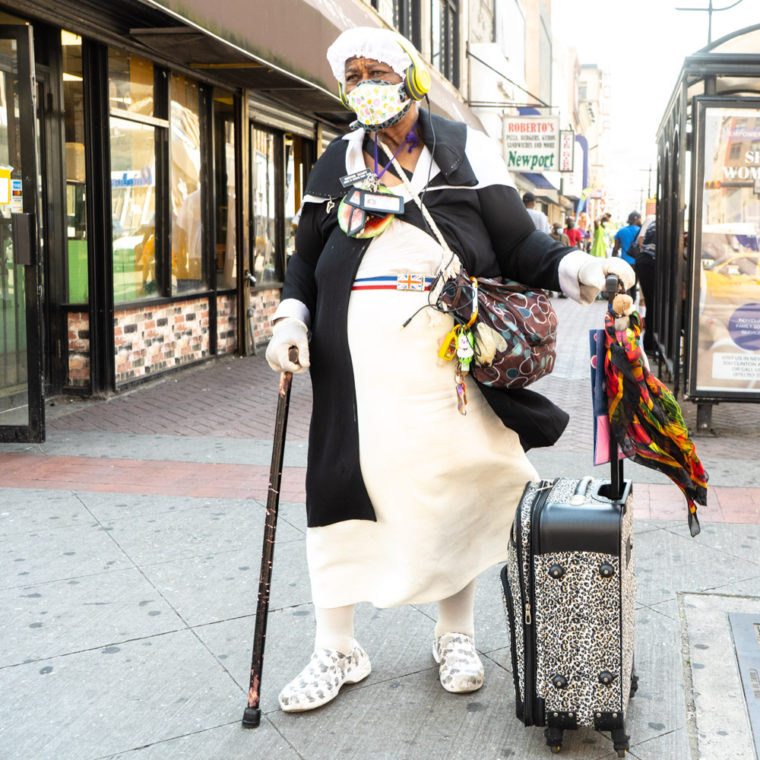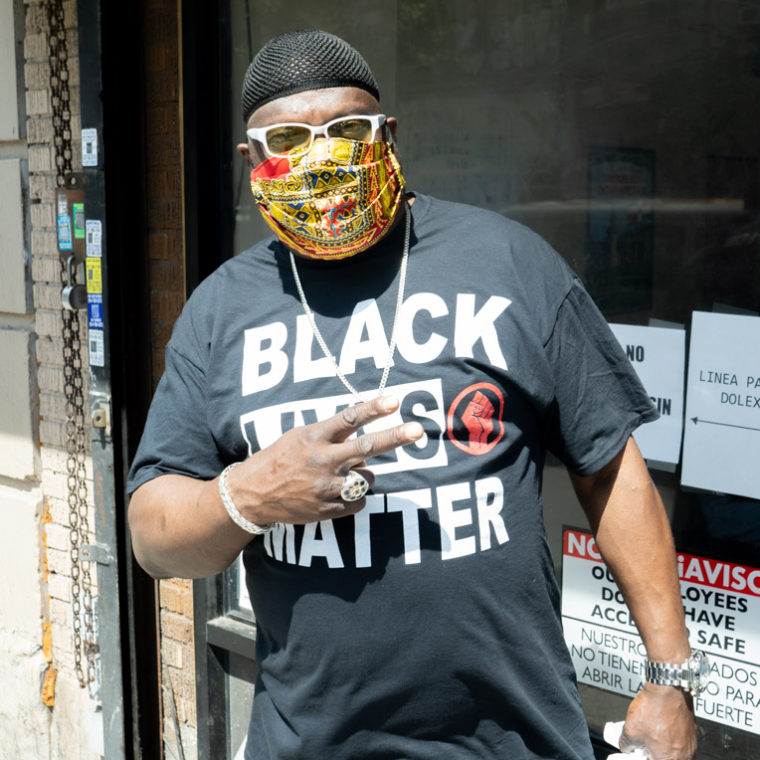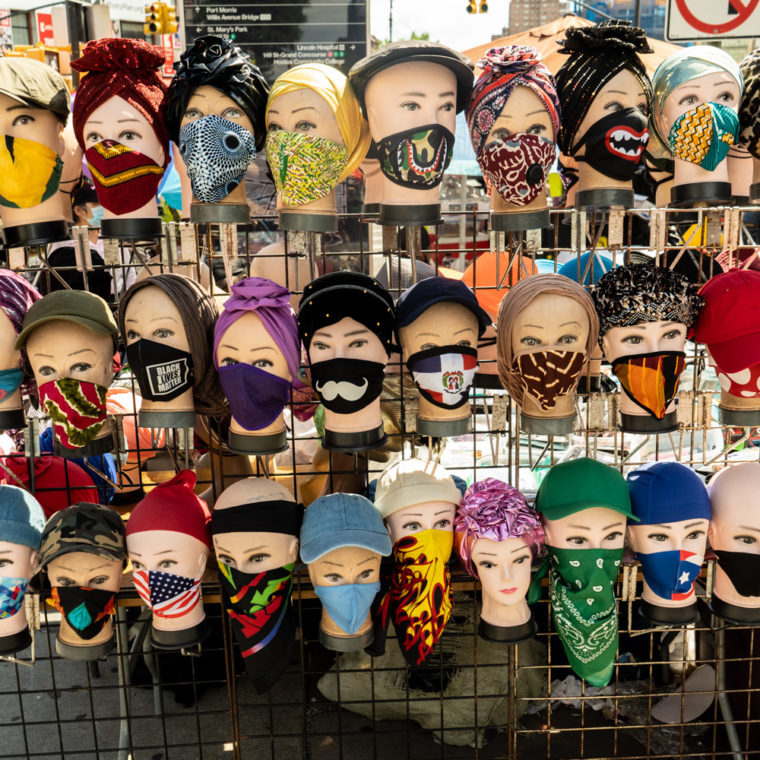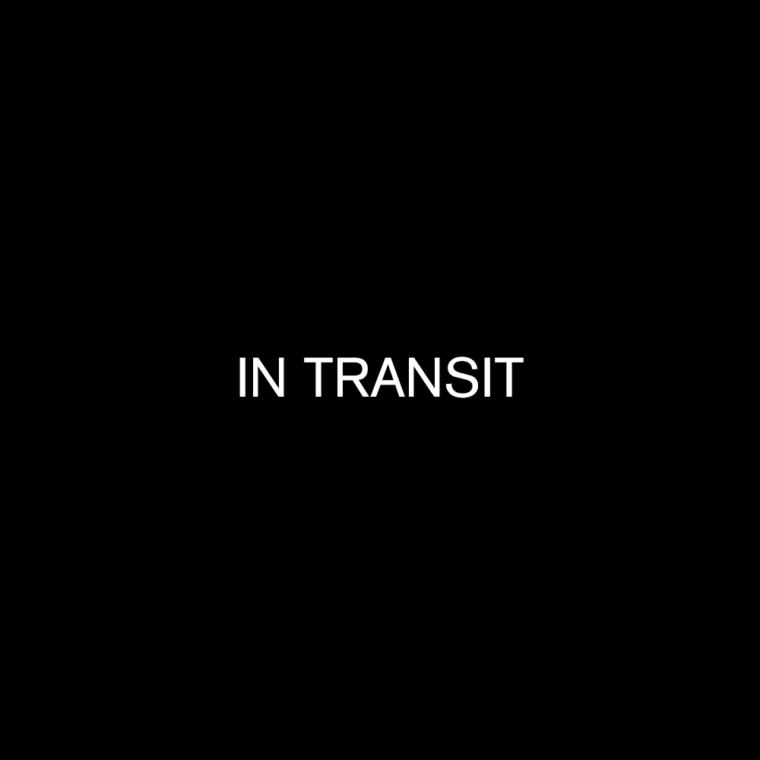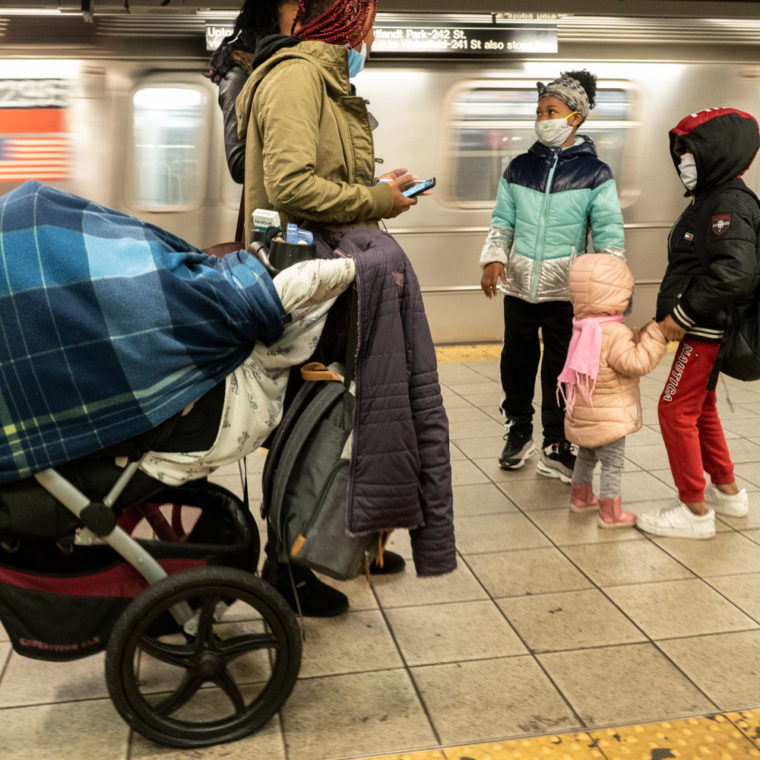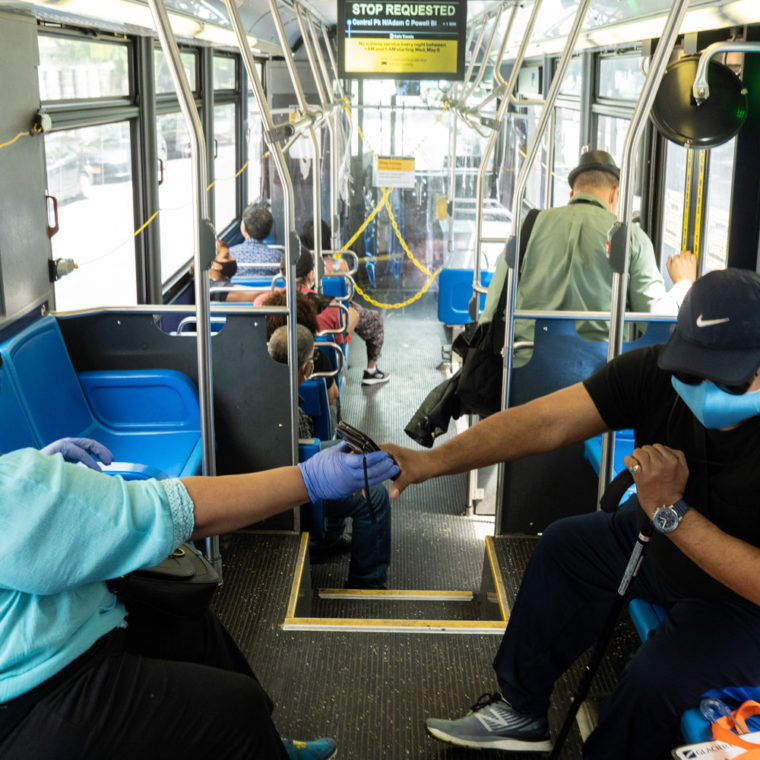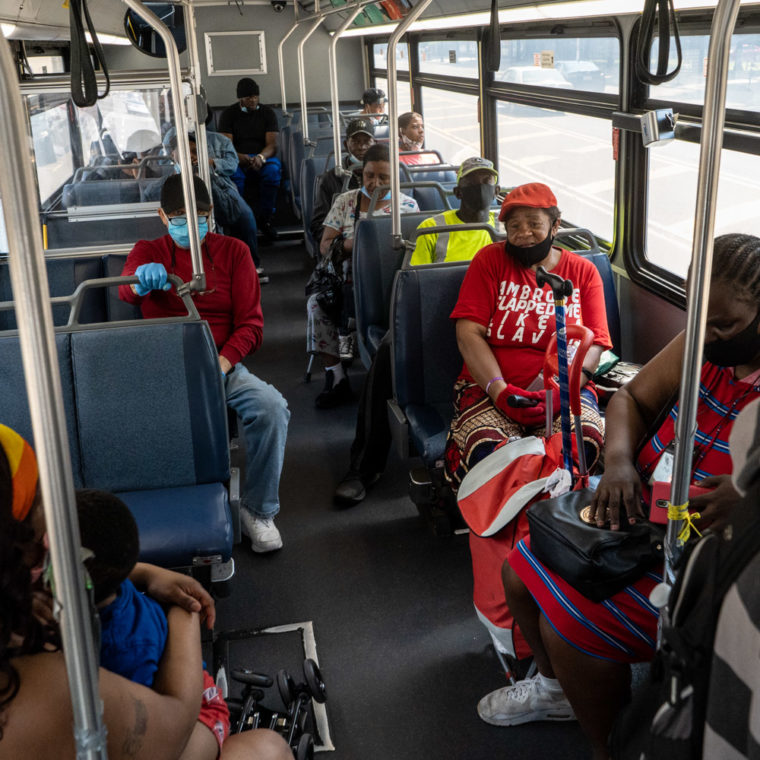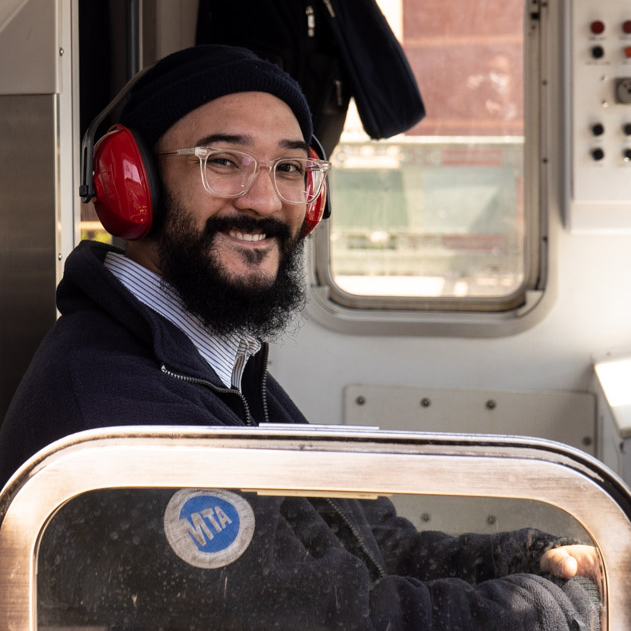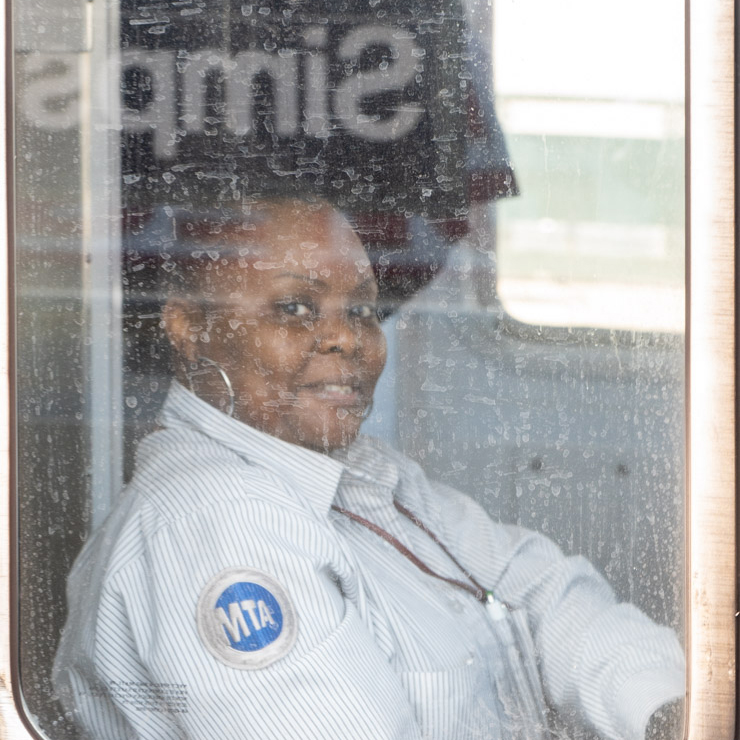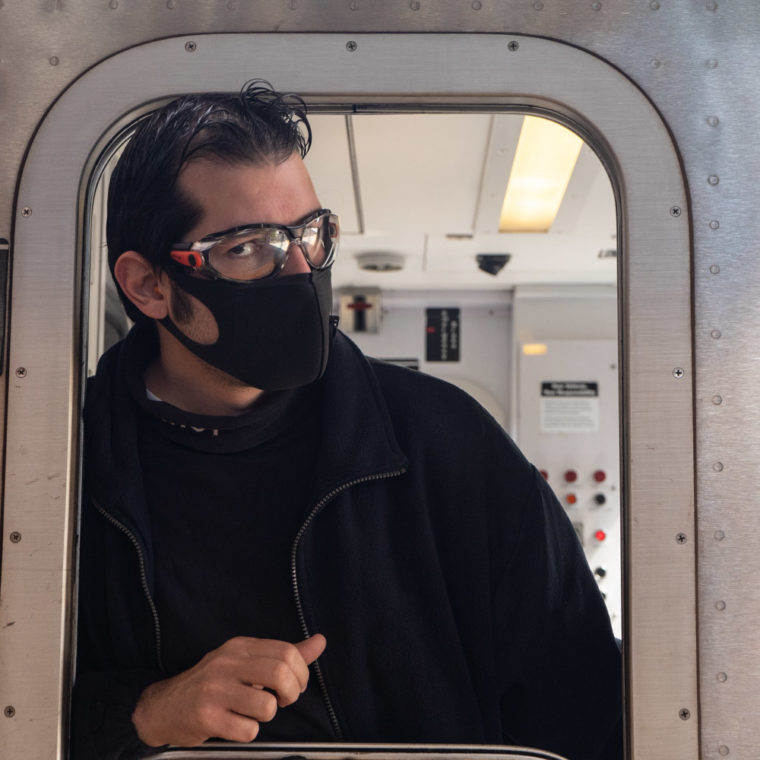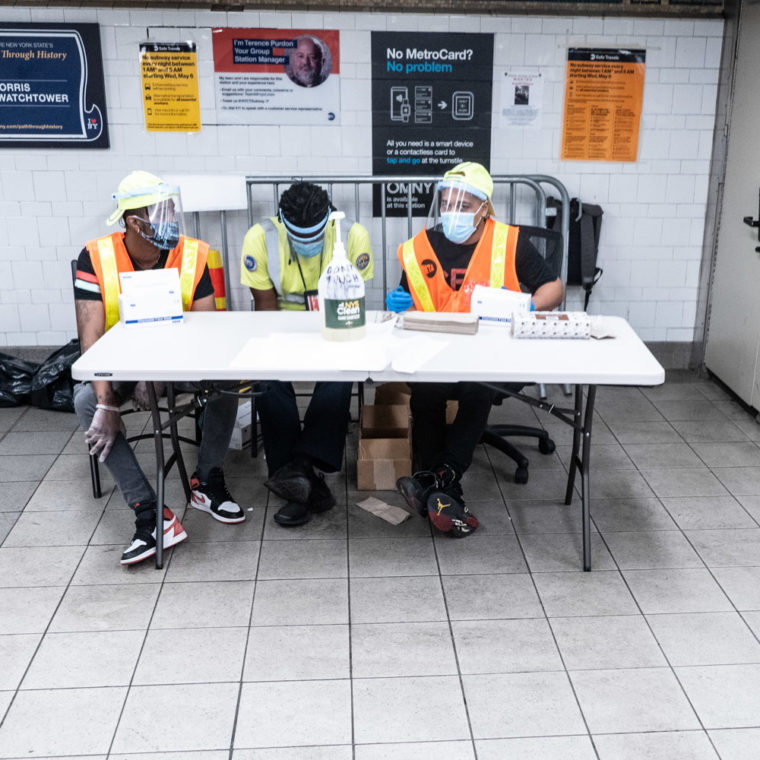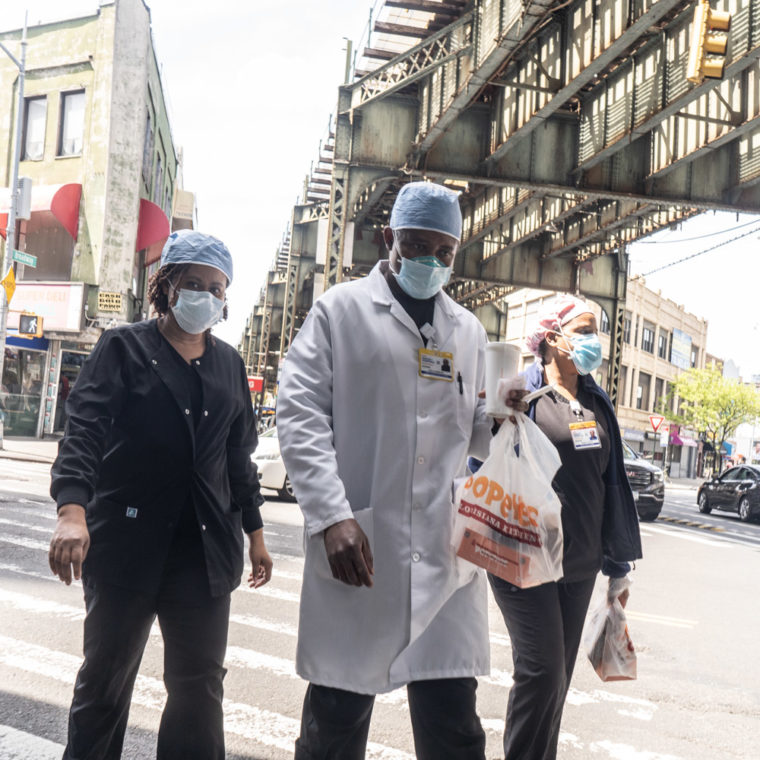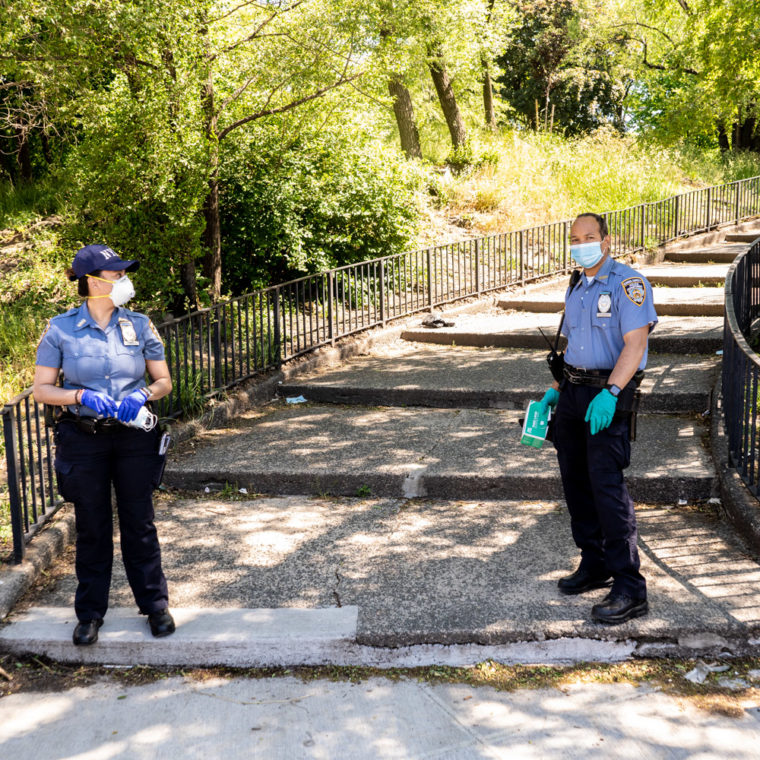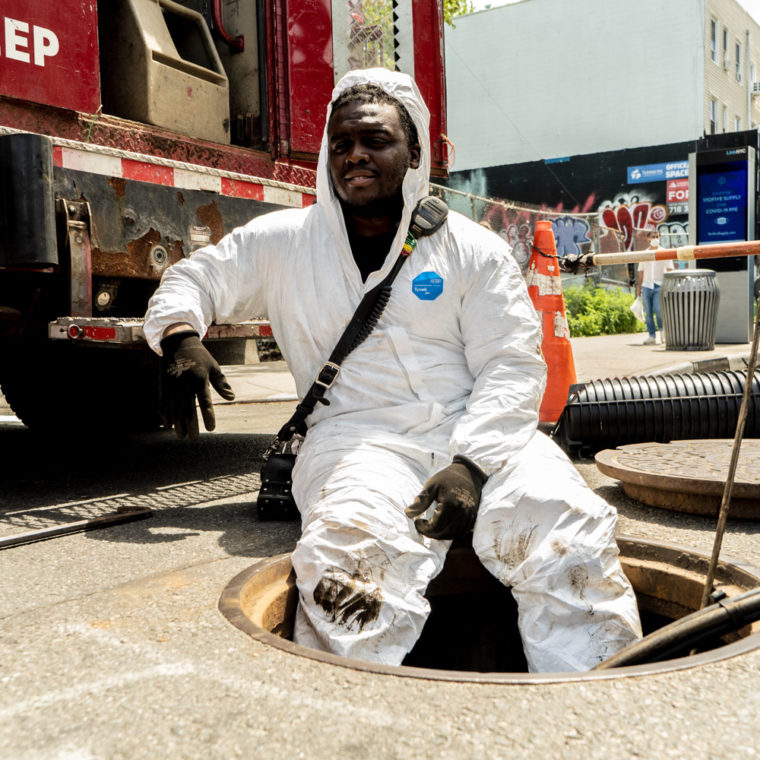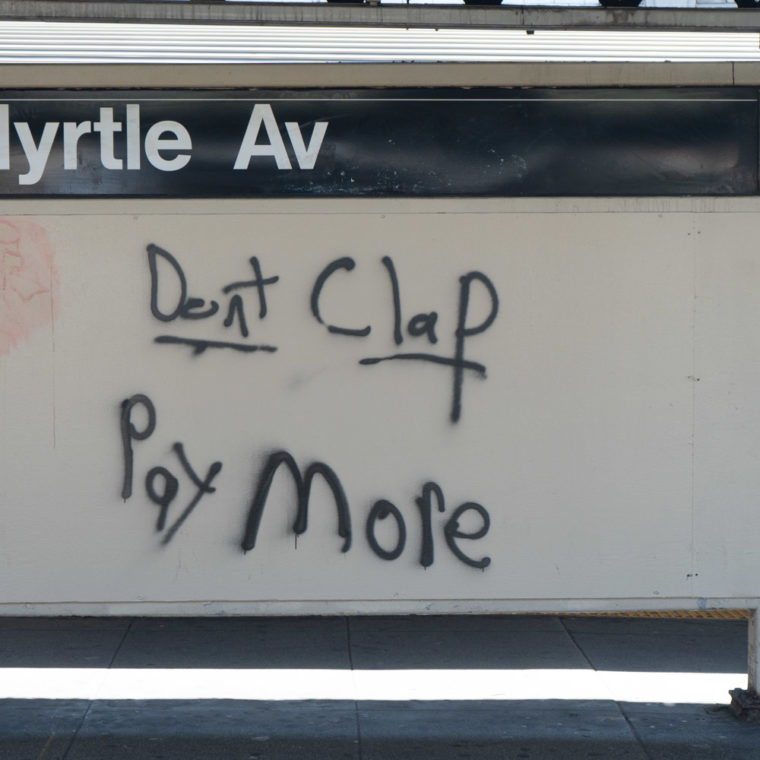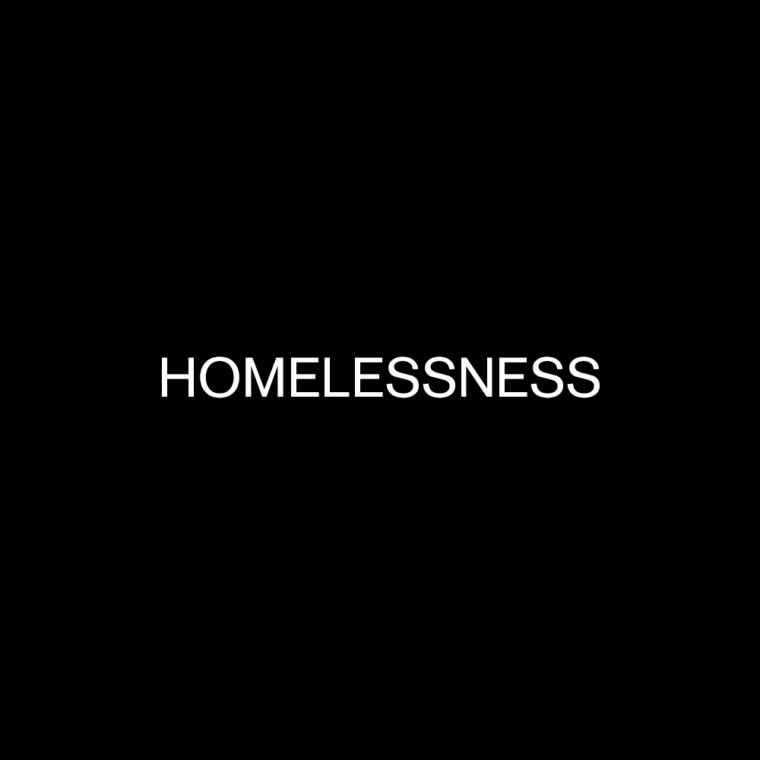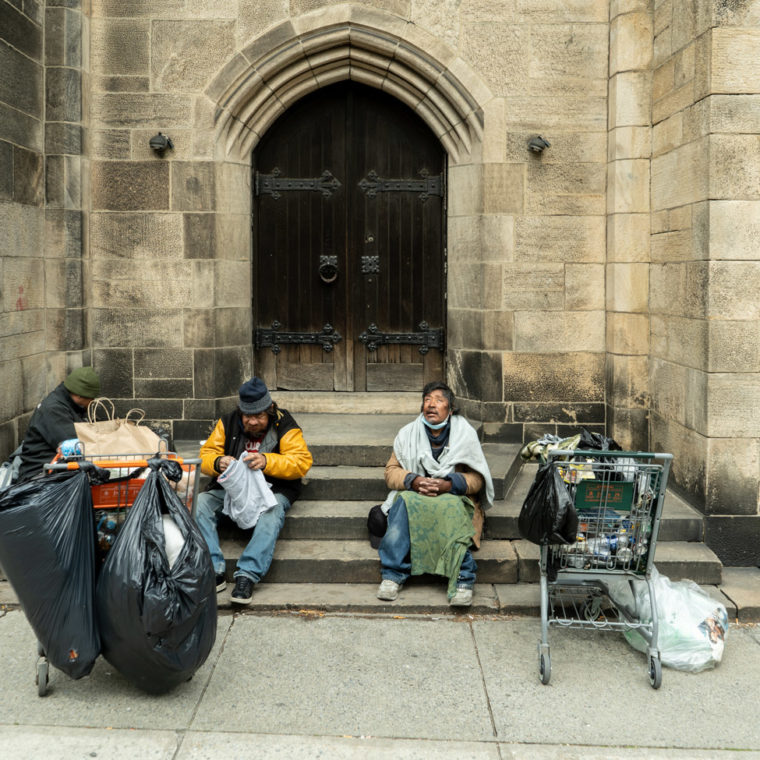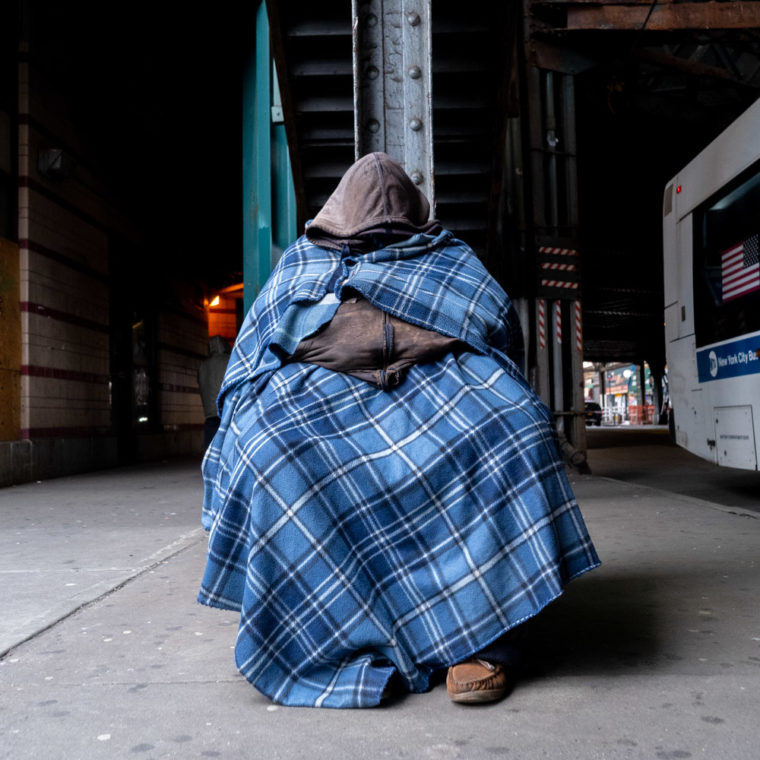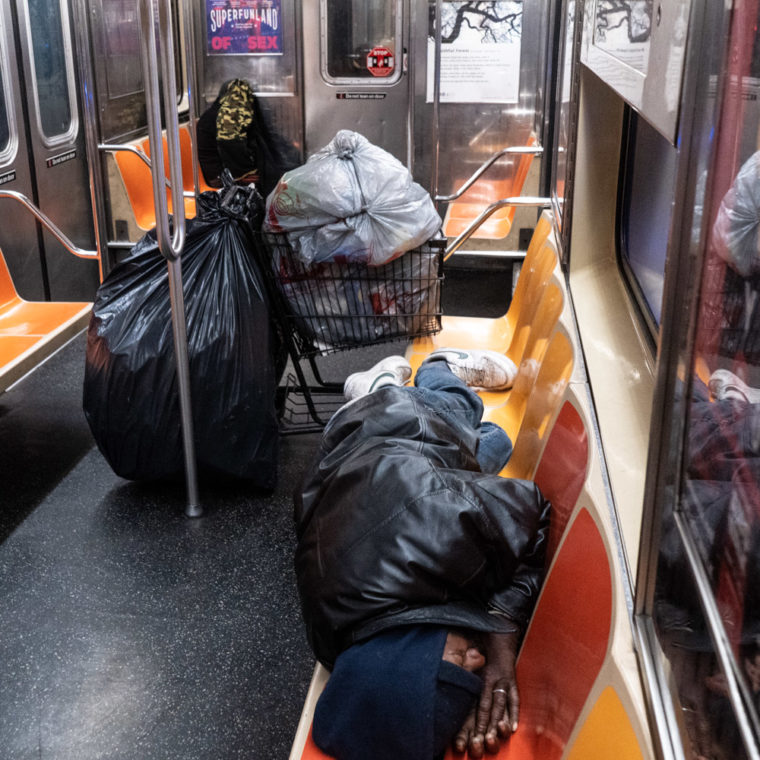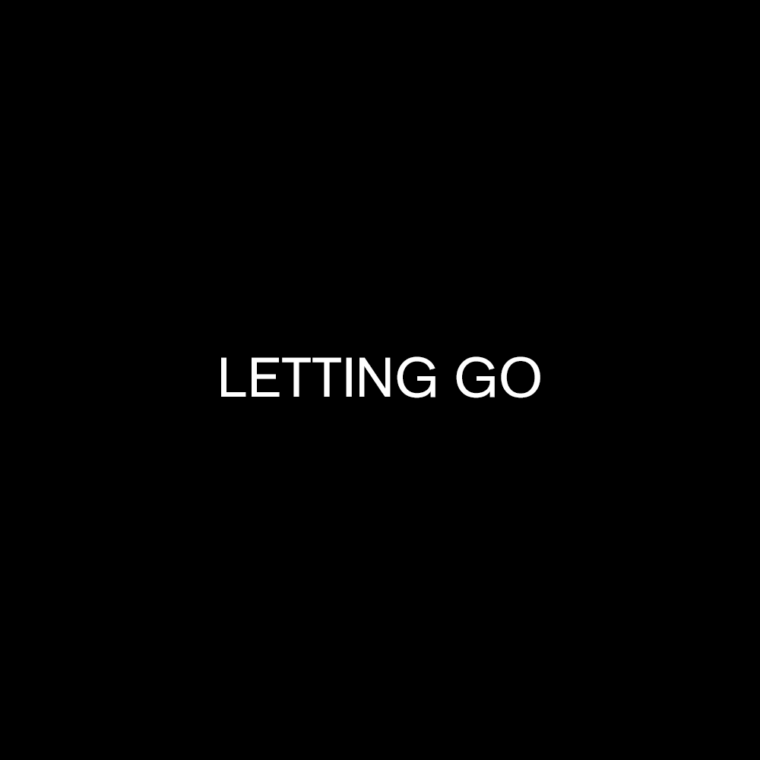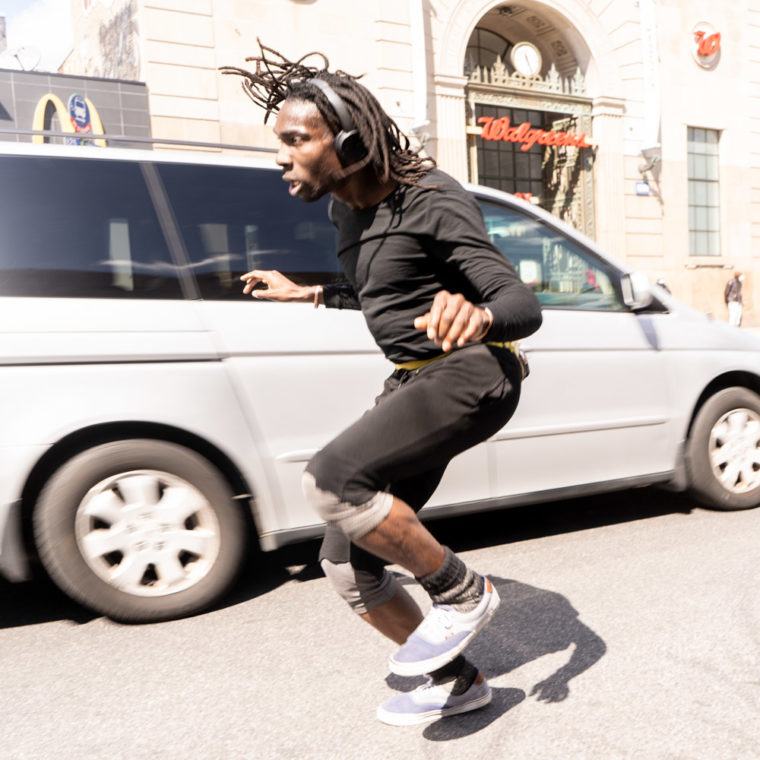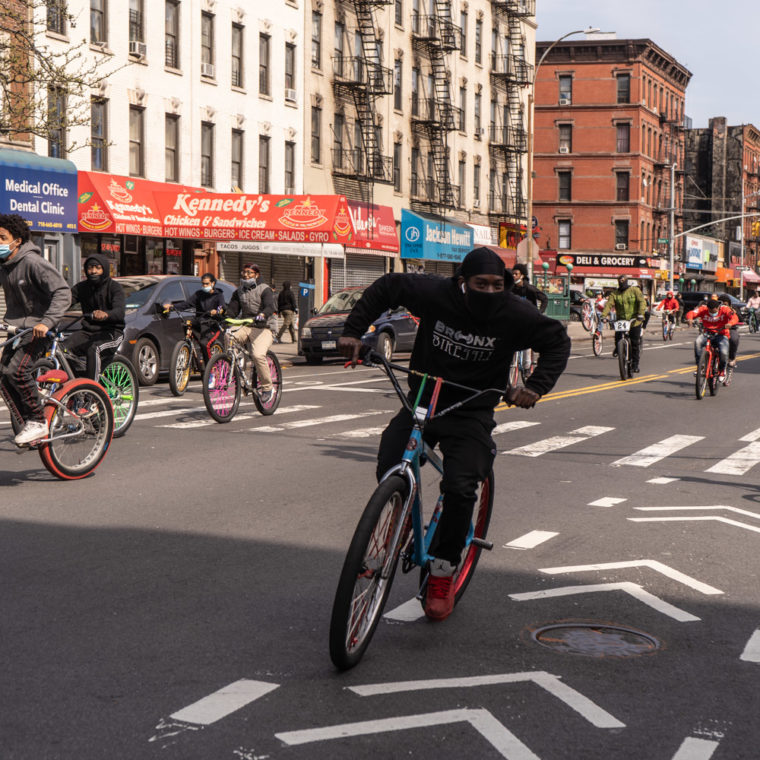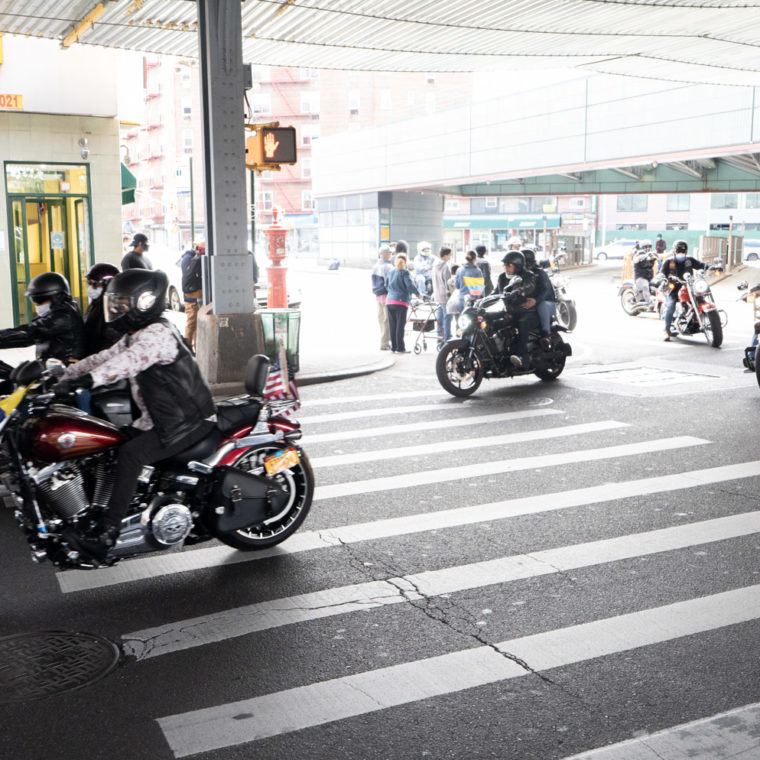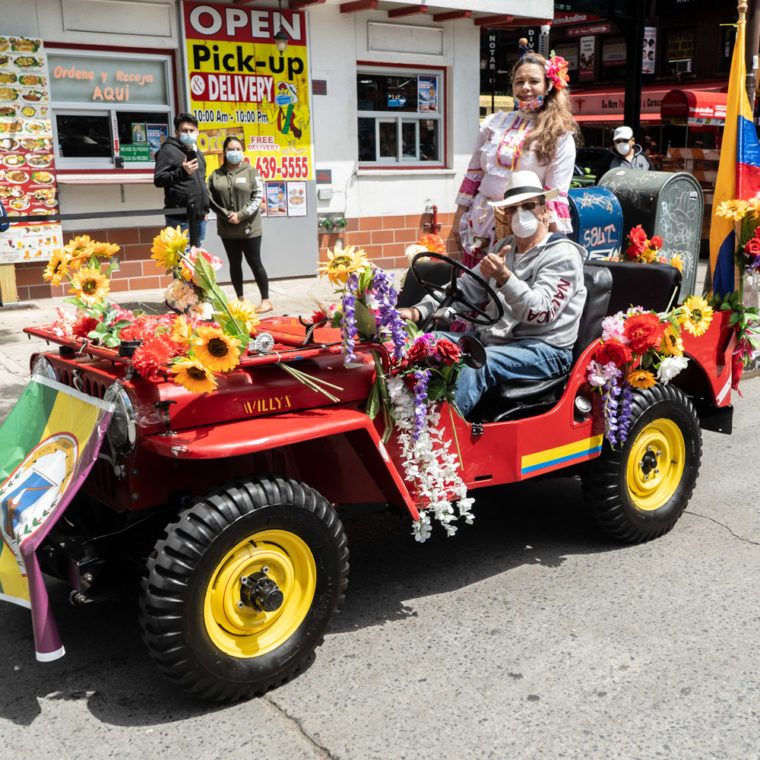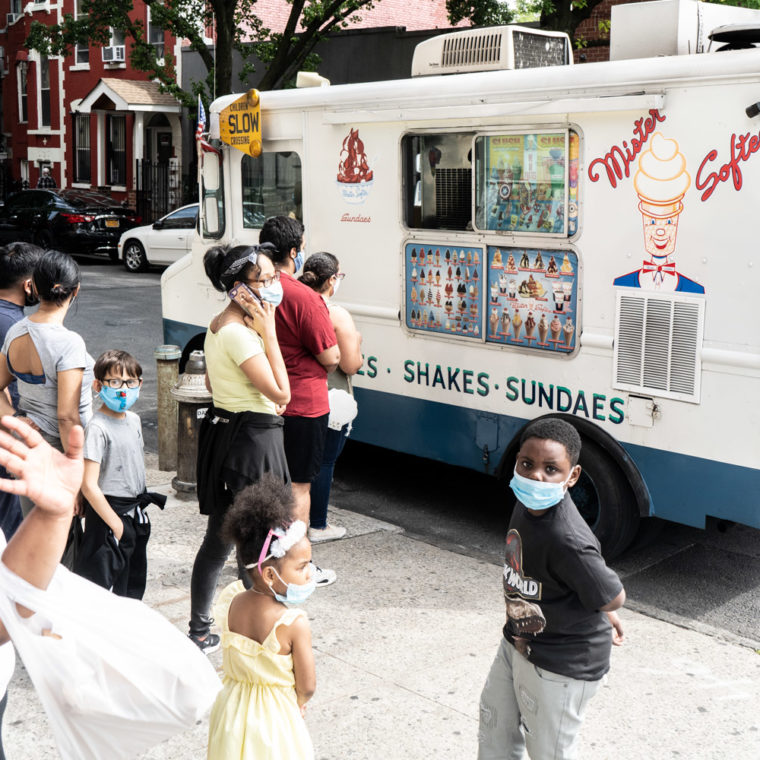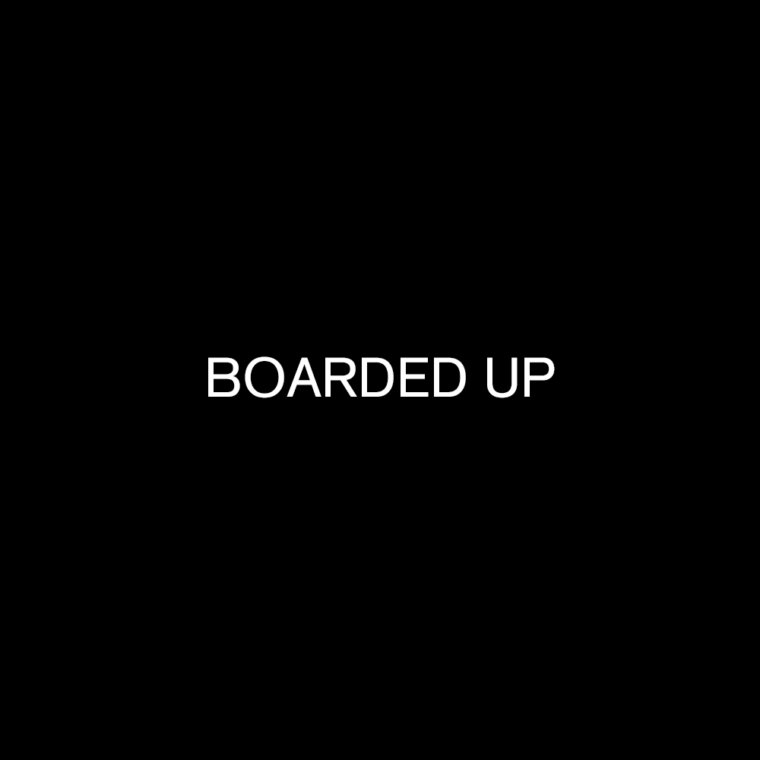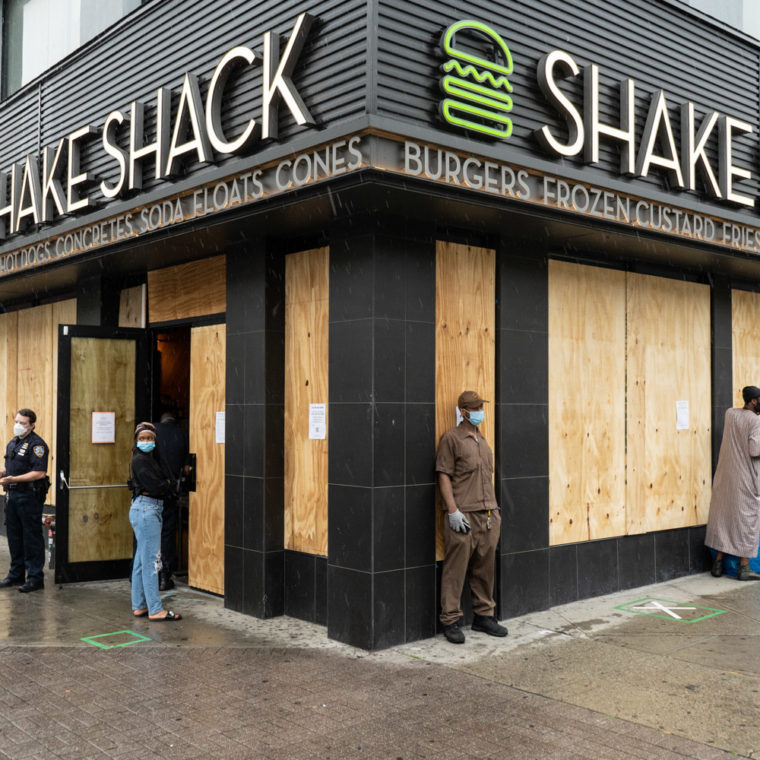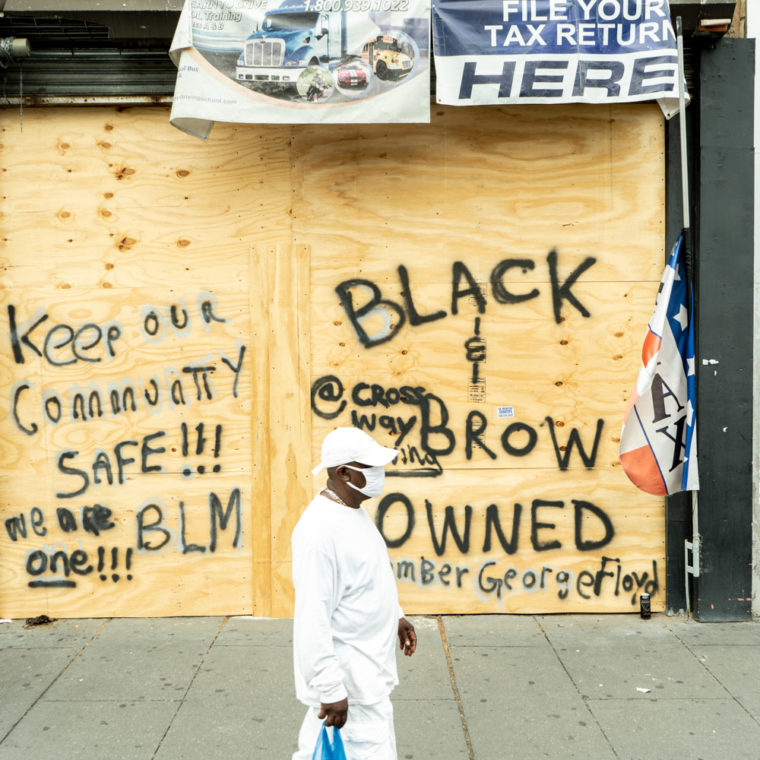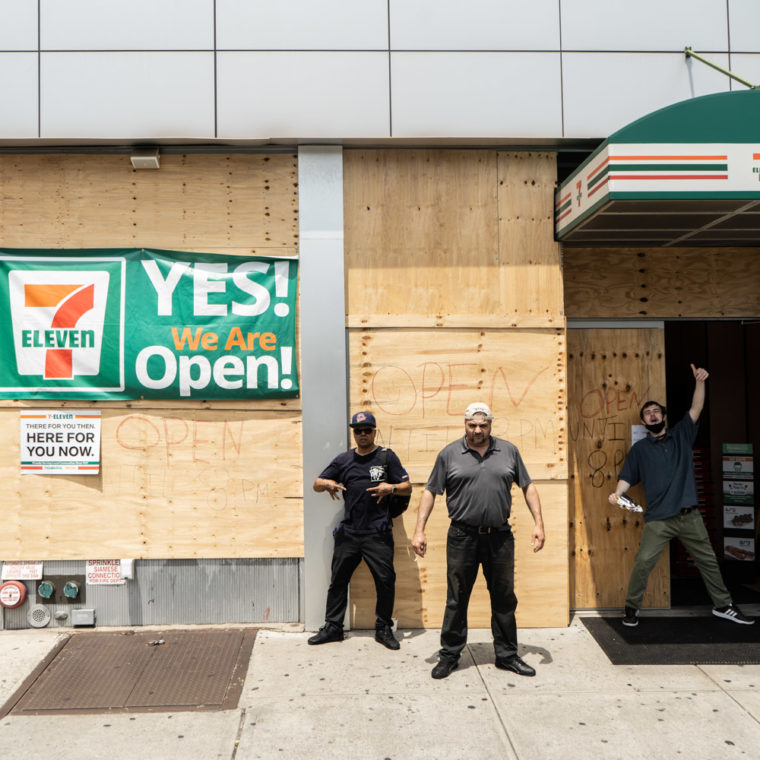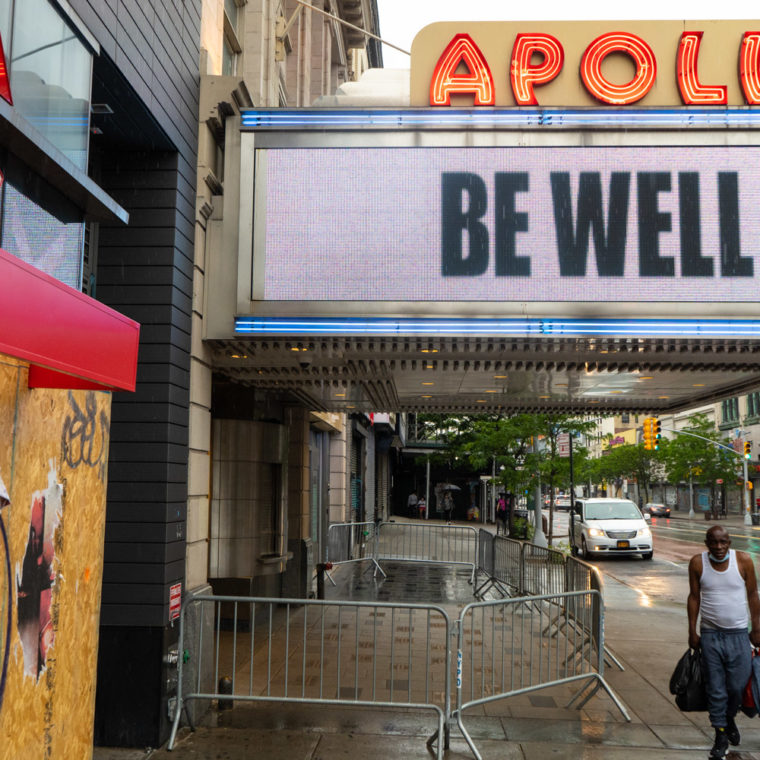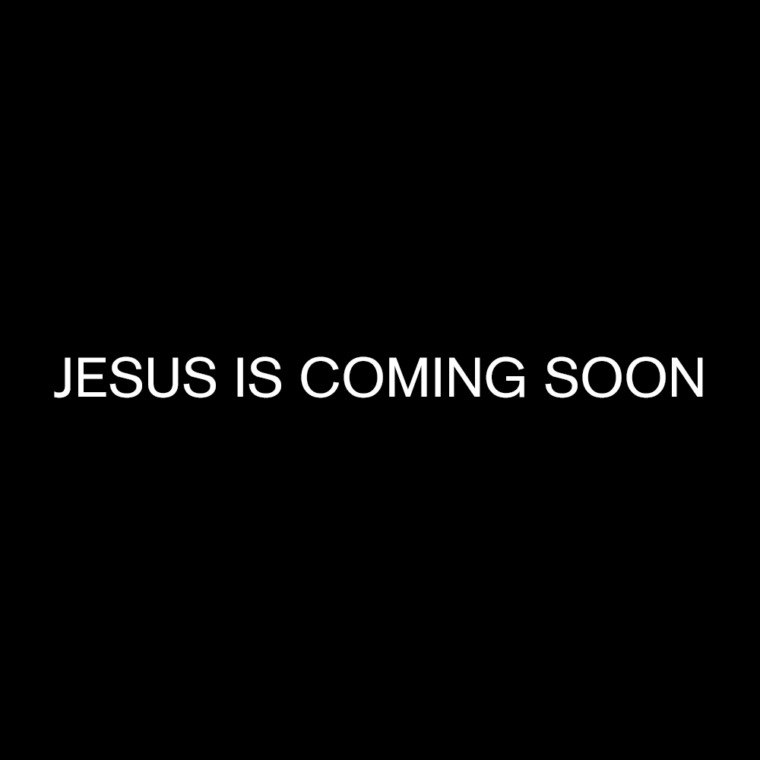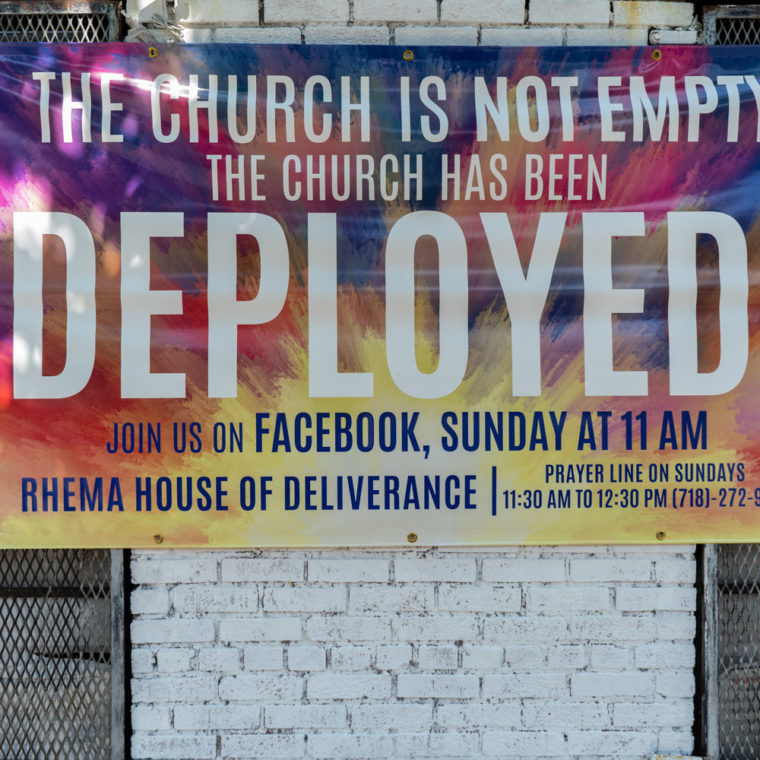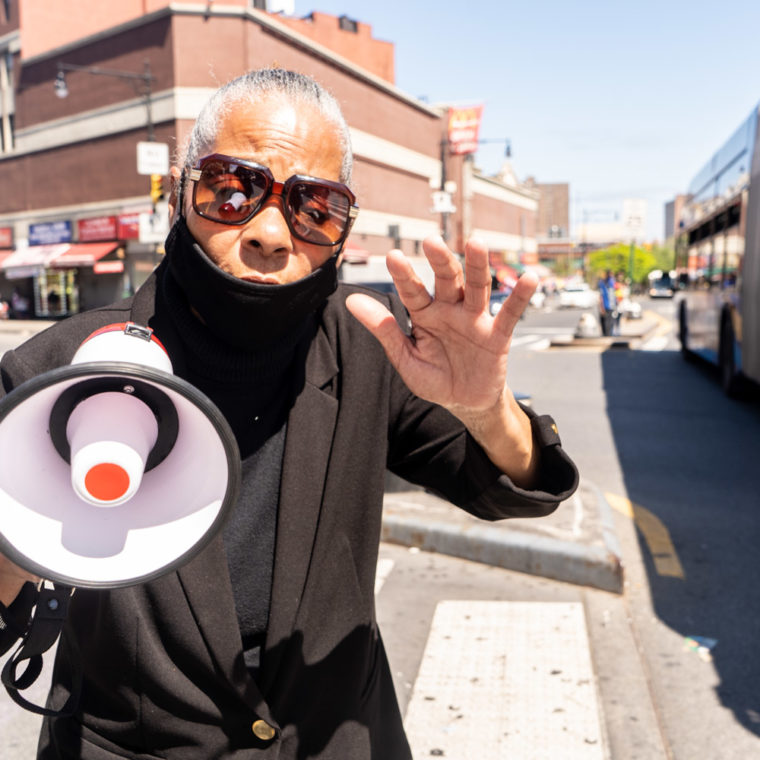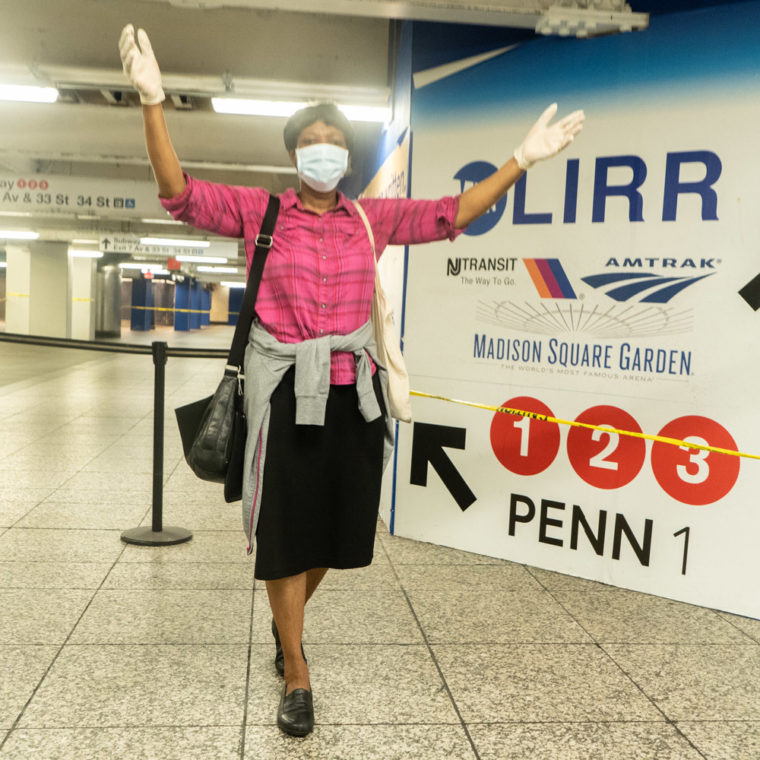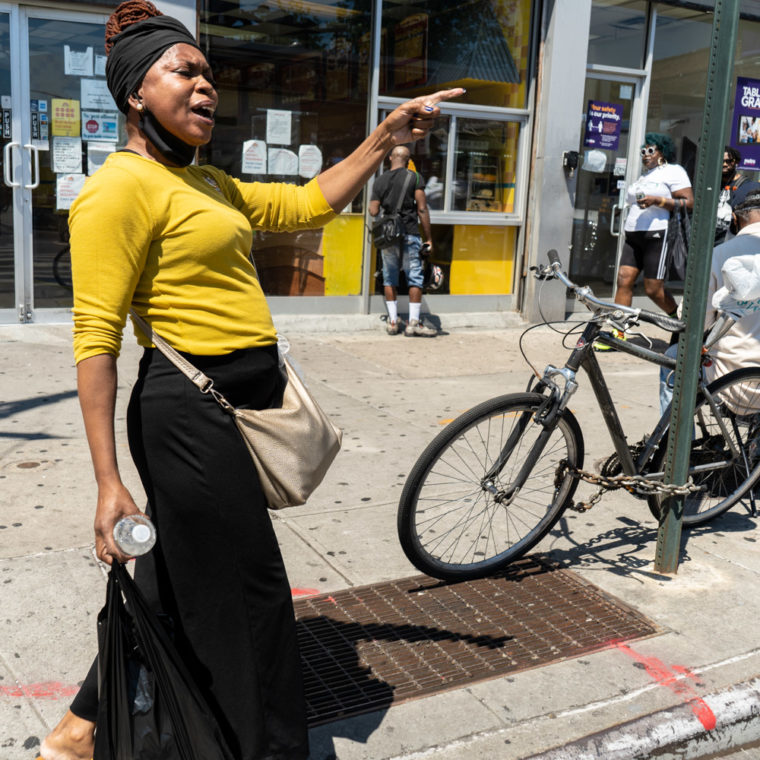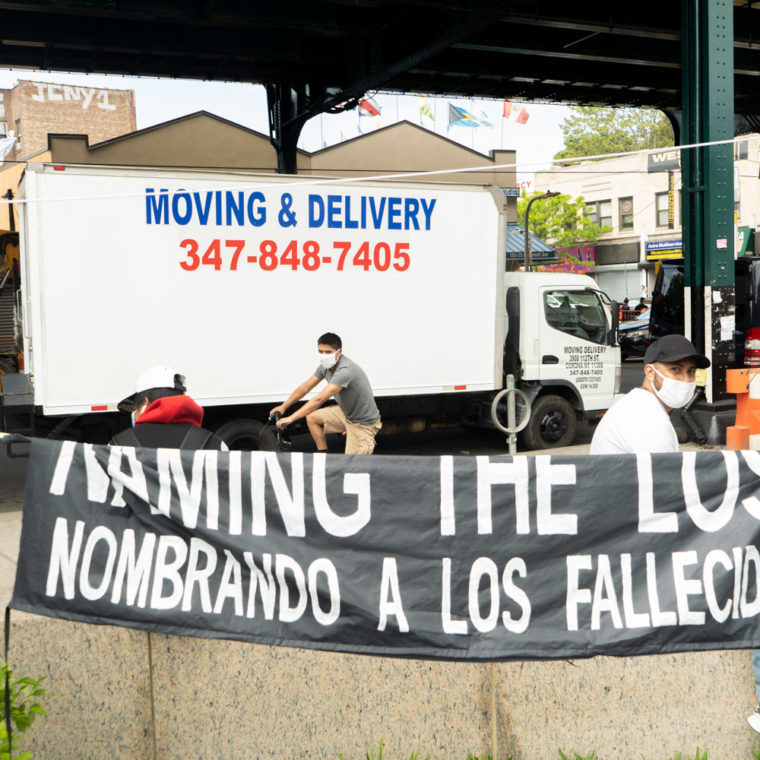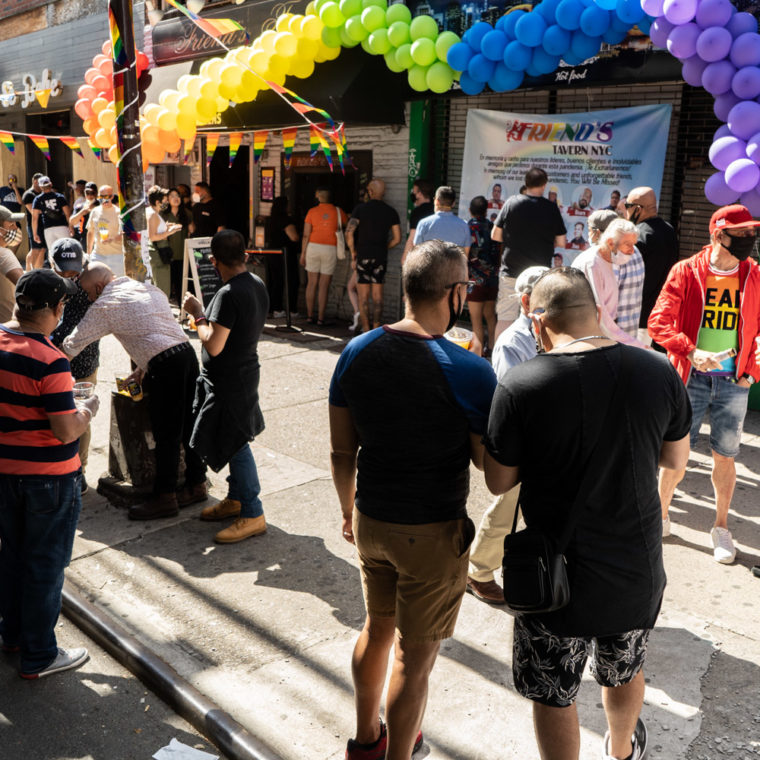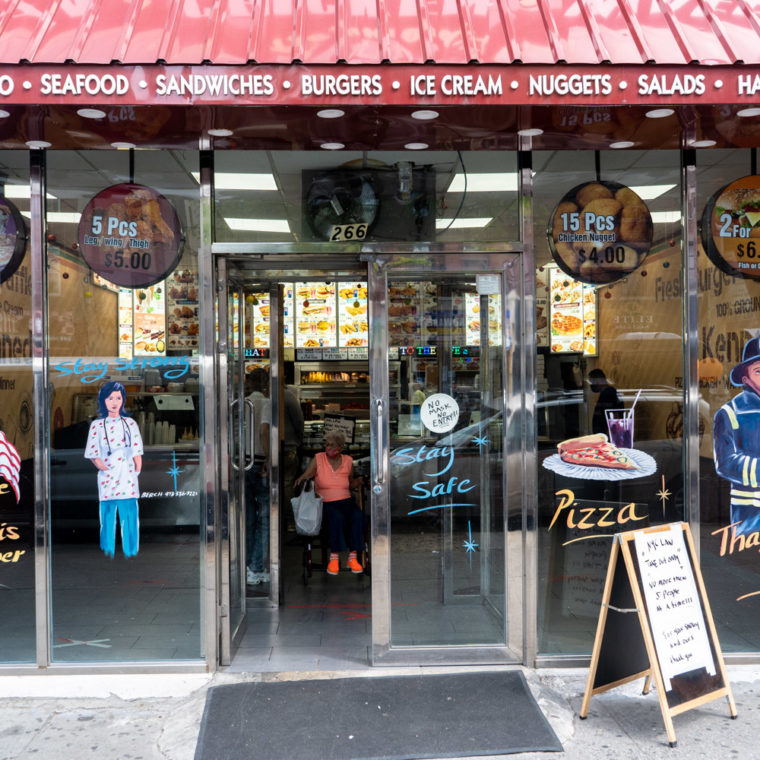Documenting Crossroads: THE NEW NORMAL
By Camilo José Vergara
with Elihu Rubin
ABOUT THE AUTHORS
Camilo José Vergara is one of the nation’s foremost urban documentarians. He was awarded the 2012 National Humanities Medal and was named a MacArthur Fellow in 2002.
Elihu Rubin is Associate Professor of Architecture, Urbanism, and American Studies at Yale University.
This exhibition was produced with assistance from Chrysanthe Broikos, consulting curator.
MEDIA COVERAGE
The Washington Post | The Architect’s Newspaper | World Architects | Wallpaper
This exhibition, a companion piece to my earlier series of photographs, Documenting Crossroads: The Coronavirus in Poor, Minority Communities, and created with Professor Elihu Rubin of the Yale University School of Architecture, documents and interprets physical adaptations and behavior modifications that people in poor, segregated neighborhoods are resorting to in order to avoid being infected and to ensure economic survival during the pandemic. Our aim is to produce a visual portrait of residents as they deal with the virus on a daily basis. Density and diversity render these spots prime locations for observing a host of behaviors, from shopping habits and fashion trends to familial interactions and health practices.
I use the word “crossroad” for a group of street intersections in several of these communities. (See the complete list of crossroads in the previous exhibition, published in June 2020. The series continues with Documenting Crossroads: Survival and Remembrance Under the Pandemic, published in December 2020.) During the past 11 weeks I have traveled from crossroad to crossroad in order to document the pandemic in some of the most severely affected urban areas, most of them in New York City. These intersections are social condensers and amplifiers, yet they are barely mentioned in media depictions of the virus and its impact, despite the fact that the number of fatalities from Covid-19 are 10 times the national average.
These crossroads are teeming with people: street vendors, evangelists, shoppers, security guards, school children, police, people on their way to work, going home, or waiting in line. There are those who come to observe the crowd, and to be observed. These hubs reveal the precautions that residents are, or are not, taking to avoid being infected by and spreading the coronavirus.
We also show ways in which gratitude to essential workers is expressed and how the dead, most of whom died in isolation, are remembered. Finally, we use time sequences accelerated to capture the rapid changes caused by the pandemic. These sequences typically begin with an image of what the places looked like at the beginning of the breakout.
I have felt compelled to visit each of these intersections once a week. Part of the project has also been to record snippets of overheard conversations along with my personal observations. In all my decades as a photographer, I had never before experienced such intense interactions with strangers who, like myself, are on guard, afraid, and confused. (The observations related to this exhibition may be found below the exhibition images, further down this page.)
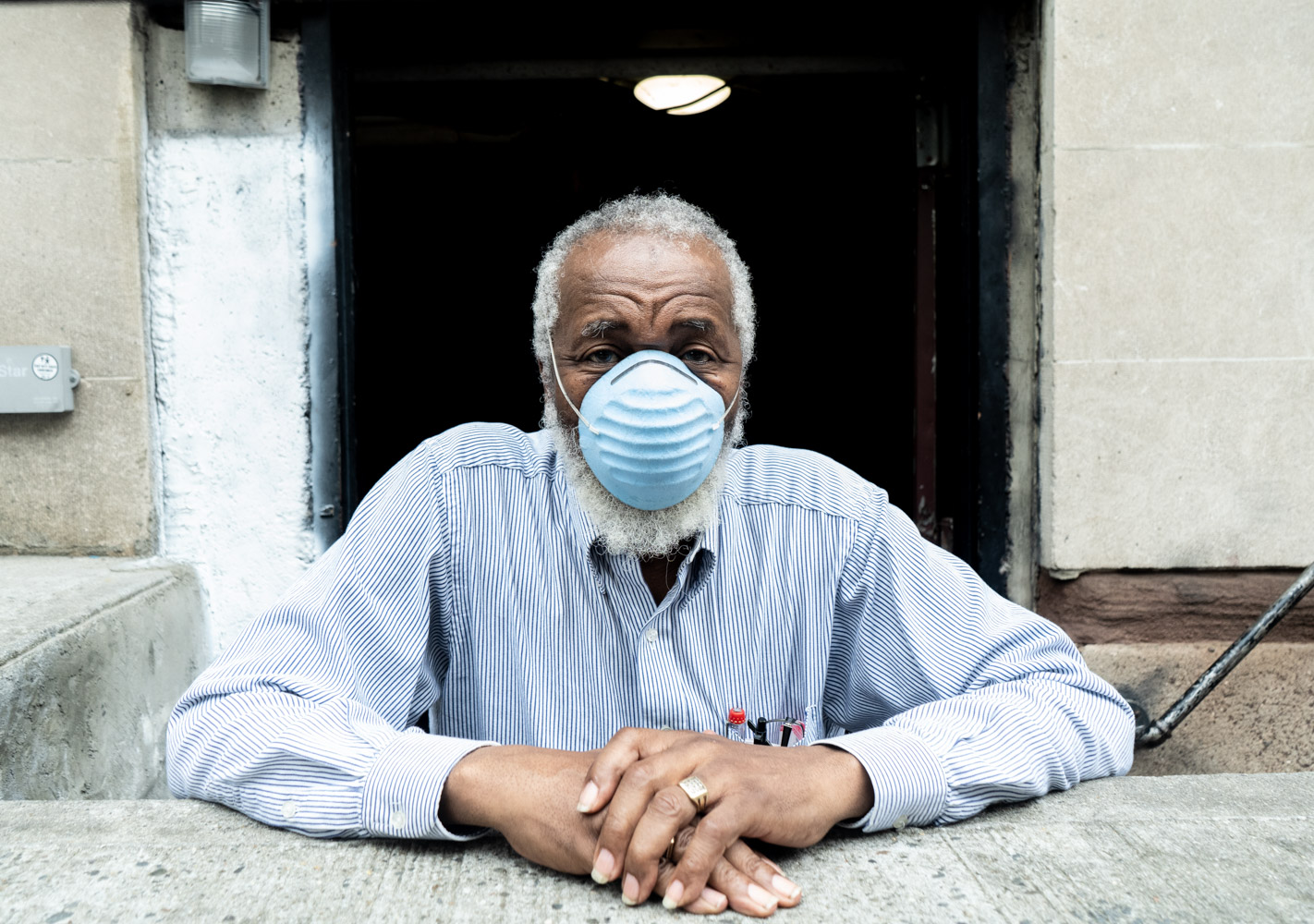
© Camilo José Vergara
While photographing, I look out for people who are not wearing a mask and who seem to be moving randomly. I move away when people get too close or are loud. A few times I got off a crowded bus or subway out of fear of becoming infected. Sometimes people have felt insulted by my distancing. For example, a man on a Harlem bus shouted at me: “You think you are better than me, cabrón?”
The primary topics of this series: Then and Now; New Street Ballet; Carving Out Space; Irrepressible Style; In Transit; Essential Workers; Homelessness; Letting Go; Boarded Up; Jesus Is Coming Soon; Murals and Memory.
Our gratitude goes to the National Building Museum for giving us the chance to begin this ambitious project as an online exhibition, and to the Library of Congress for further supporting us by placing the documentation on its website.
Camilo José Vergara
June 16, 2020
The New Normal
The first attempts to visualize the impacts of Covid-19 on urban space were pictures of the “Great Empty.” With the economy on “pause” and “lockdown” orders in place, public life came to an abrupt halt. This was especially evident in iconic public spaces like Times Square in New York, Place de la Concorde in Paris, and the Piazza San Marco in Venice, but the inactivity was palpable on Main Streets across the country. These were the Coronavirus “ghost towns”—everything in place, nobody there—that became emblematic representations of the Great Quarantine of spring 2020. On the one hand, these empty spaces represented real economic pain: More than 20 million Americans lost their jobs. Acres of idling office buildings seemed like great folly or transitory mirage, useless and unreal. To quote Marshall Berman quoting Karl Marx: All that is solid melts into air.1
Images of desolation were also misleading, and Covid Ghost Towns obscured as much as they revealed. The cities were not actually empty. Tens of thousands of essential workers continued to navigate urban space so that the rest of us could shelter in place. Hospitals and care facilities were overcome with sick people. Even if the virus had been introduced by affluent travelers, it quickly became clear that its impacts were disproportionately endured by the most vulnerable members of our society. Coronavirus was writing another chapter in a long and painful history of racial inequality, exposing and reproducing social faultlines. Yet Ghost Town images evacuated the scene, replacing vastly uneven and difficult circumstances on the ground with something that could even be perceived as “romantic, in a post-apocalyptic way.”2
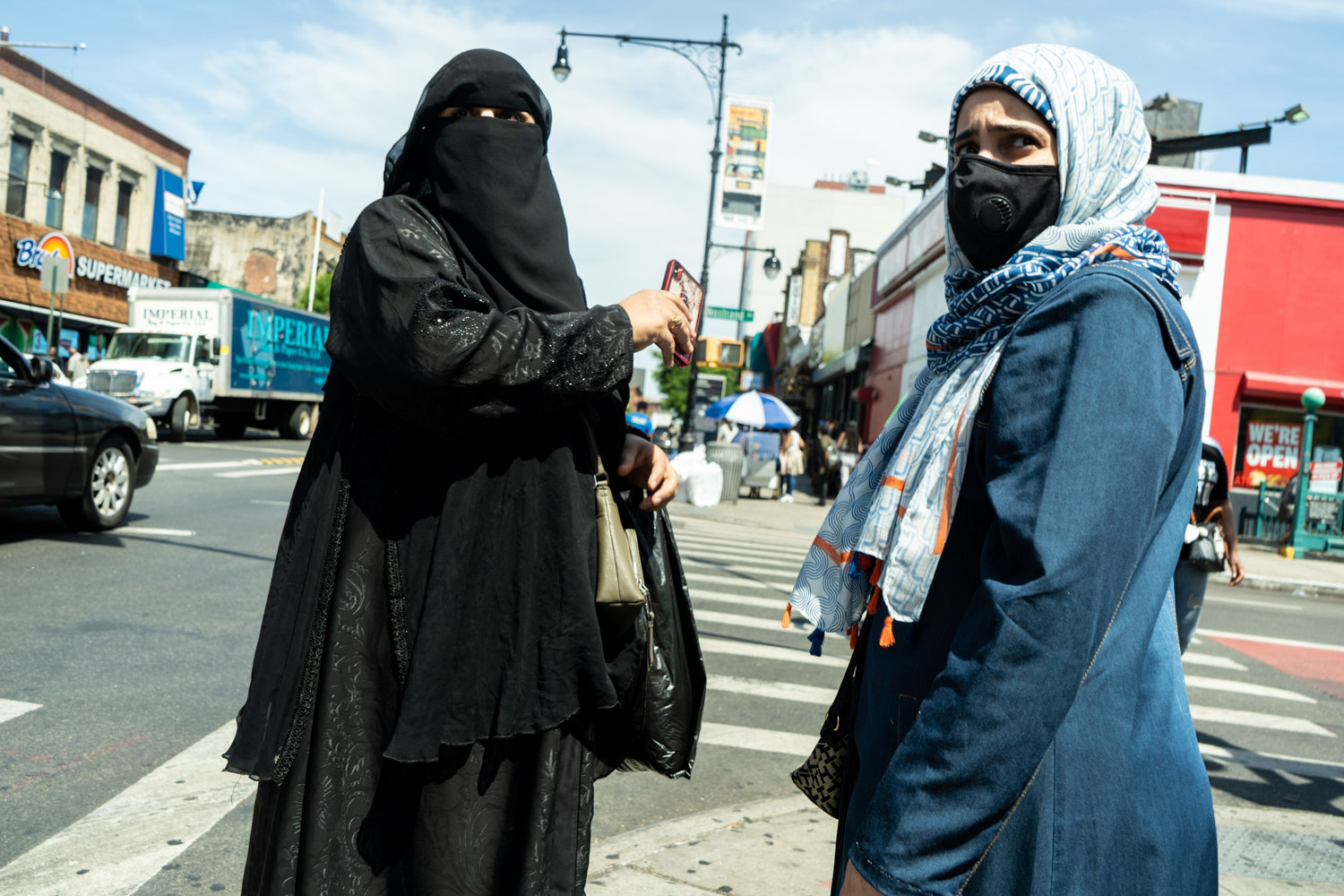
Eventually, more-nuanced and challenging representations of Coronavirus complicated the facile image of a ghost town. These included first-person accounts from nurses, doctors, and careworkers, and searing images from inside overwhelmed hospitals. Pictures of refrigerated trailers served as grim markers of the growing death toll. All the while, another photographic project was under way to record the perseverance of everyday life, even in the heart of urban areas hit hardest by the pandemic. These dispatches have come from another essential worker, Camilo José Vergara, part of his decades-long commitment to witness urban change and to document the social life of everyday streetscapes in poor, inner-city neighborhoods. In this way, these photographs offer a crucial and missing perspective on Covid-19: the patterns and processes of adaptation and resilience as city dwellers adjusted to a “New Normal.” We join Camilo as he makes his rounds to the “Crossroads,” a set of urban nodes in the New York metropolitan area—including Newark and East Orange, New Jersey—that he has identified as moments of civic intensity, irrepressible places that manifest trends and anchor public life.
The anthropologist Edward T. Hall called it “proxemics”: the study of physical distancing and the invisible yet intuitive boundaries between intimate, personal, social, and public space.3 How close was too close? Different social norms prevailed in different places, but humans usually figured out a way to space themselves out to address crowding and adapt to unusual situations. How would “social distancing” rules and face mask requirements play out at the Crossroads?
The city has always been a center of commerce, and this is especially true at the Crossroads. Many establishments were closed; but for those that were open—groceries, markets, pharmacies, food pantries, banks, testing centers, and urgent-care facilities—the “New Normal” meant waiting in line. Handmade signs attempted to communicate social distancing and implored shoppers to wear masks. Markings appeared on the sidewalk to regulate the queues. In some cases, enforcers were deployed in full-body plastic suits and with red “Stop” signs; they worked valiantly to maintain order. Temporary tents were erected at testing centers like the one in Elmhurst, Queens, where enforcers ran a tight ship and broadcasted confidence that the zone was under control and that chaos would not be tolerated.
Some sidewalks were more generous than others, and no two queues were exactly the same, but on busy streetscapes it was impossible for people to keep themselves 6 feet apart at all times. Public life adjusted to this new urban ballet of social coordination, and each of Camilo’s photographs portrays an example of what sociologist Erving Goffman might have called “microstudies of the public order.”4 A folding table was all that was required to turn a conventional store inside-out; services usually conducted indoors took up positions in the public realm. Even the most modest apertures and eddies in the flow of the street had an important role to play in making these accommodations. A building’s chamfered corner made a plaza. The area in front of a closed kiosk carved out space for a small commercial outpost. Donning their products—a mask, face shield, gloves, and white polyurethane gown—proprietors quickly gained credibility. Sanitizing agents and personal protective equipment were in high demand and masks became another outlet for self-expression.
While architects and planners speculated on what Covid-19 might mean for the future of urban design, a sequence of photographs in front of the Post Office at 103rd Street and Roosevelt Avenue in Queens demonstrated a transitory, adaptive urbanism that was already taking place. Fruit stands and food trucks came and went as an informal PPE market—just a few open boxes at first—took root beneath a fortified tent. It was difficult to design for this kind of ad hoc urbanism; but one lesson was to reinvest in local infrastructure like this modest plaza to make it even more robust as a facilitator for the kind of spatial improvisation that is the art of city-dwelling.
With fewer people on the streets, those without homes became more conspicuous. This was true on the New York subway, which began closing between 1:00 am and 5:00 am for disinfecting. Transit workers were at high risk for exposure, and many became ill. Soon the buses were roped off to give drivers plenty of space. Though daily ridership plummeted, the indispensable role of mass transportation was never more evident as essential workers, including those on the frontlines, continued to rely on the MTA. New Yorkers had taken to emerging from lockdown every evening at 7:00 pm to cheer for essential workers, including subway drivers like the ones captured in Camilo’s portraits; but a message scrawled on a platform offered a biting critique: “Don’t Clap. Pay More.”
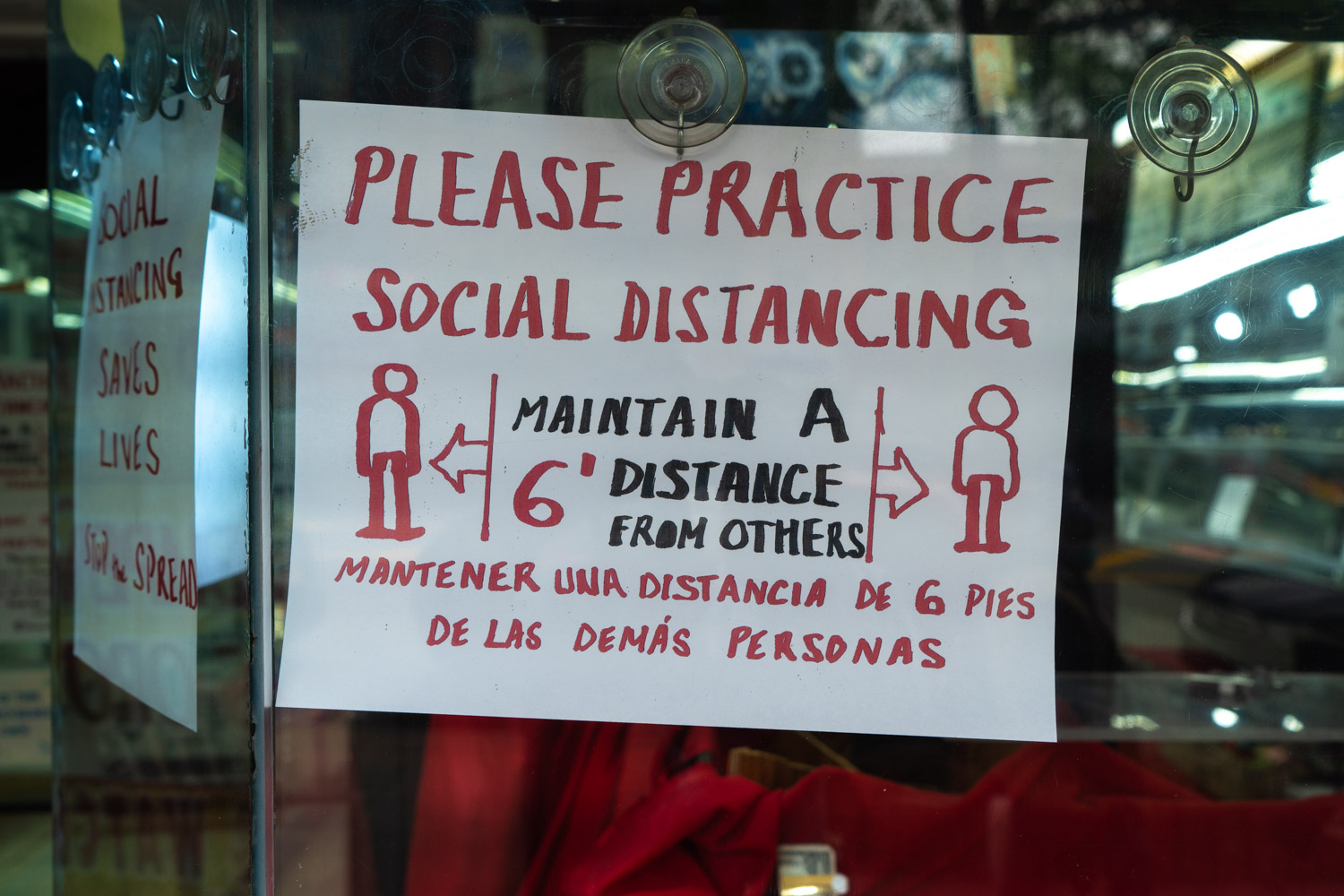
Camilo has always paid attention to the ordinary signage, graffiti, and street art that play such important roles in the visual environment of the city. Marquees relayed messages of hope and fortitude. A hand-painted window mural at the Kennedy Fried Chicken on Willis Avenue in the Bronx expressed gratitude to nurses and firefighters and pledged unity: “We are all in this together.” And we expressed gratitude to optimists like Ronald, a building contractor in Bedford-Stuyvesant, who reassured us that everything was going to be OK: “There is nothing to be afraid of.” Among the brutal indignities of the pandemic have been the wholly insufficient opportunities to mourn the dead; memorial banners appeared as we began the long process of confronting the terrible human toll of this crisis.
As Memorial Day approached and cities and states initiated the first stages of reopening, a palpable hopefulness emerged that public life, commercial life, and employment would pick up: the New Normal was beginning to hit its stride. Demand surged for bicycles, and small bands of teenagers took to the streets in a gleeful, collective occupation, performing mobility and wanting to be seen. Adults were not exempt, as motorcycle clubs and classic cars went on parade. But soon another street presence came to dominate the public realm. The murder of George Floyd by police in Minneapolis brought the walls crashing down as hundreds of thousands of demonstrators in cities across the U.S. and around the world took to the streets to protest police brutality and systemic racism. Another kind of adaptive architecture emerged: chipboard and plywood barriers appended to plate-glass storefronts to deflect justifiably rageful protestors who were tempted to cause damage.
The pandemic took a back seat to the fight for justice, and yet the two events were related: Both exposed systemic inequalities and emphasized the importance of the public realm as civic infrastructure. It was painfully clear that a second pandemic—as silent and vicious as Covid-19 itself—suffused the metropolitan environment: institutionalized racism and residential segregation, vile afflictions that also created the conditions for disparate health outcomes. For those observing from relative comfort, the key was to resist knee-jerk anti-urbanism that was another expression of racist ideology. Despite pervasive uncertainty, there is hope that these events will galvanize substantive change in the policies, practices, and beliefs that govern our diverse society; indeed, we all must do the work to make it so. And when change does come, we will see it evolve at the Crossroads, reflected in the lens of Camilo’s camera.
Elihu Rubin
June 18, 2020
________________________________________
1 Marshall Berman, All That Is Solid Melts Into Air: The Experience of Modernity (New York: Viking Penguin, 1988).
2 Victoria Bekiempis, “’A Ghost-Town, Tumbleweed Quality’: New York Shuts Down Over Coronavirus,” The Guardian, March 18, 2020. https://www.theguardian.com/world/2020/mar/18/new-york-coronavirus-streets, accessed June 7, 2020.
3 Edward T. Hall, “Proxemics,” Current Anthropology, Vol. 9, No. 2/3 (Apr.–Jun., 1968): 83-108.
4 Erving Goffman, Relations in Public: Microstudies of the Public Order (New York: Harper & Row, 1971).
DOCUMENTING CROSSROADS: THE NEW NORMAL
Observations and Comments Overheard at a Distance of 6 Feet
Camilo José Vergara
At Sylvia’s, a landmark Harlem restaurant, I stopped and ordered fried chicken and macaroni and cheese. That was a mistake, because the place was crowded, the space facing the counter was narrow, and the service slow. Waiting there for my food could have gotten me infected. I decided to wait outside, where a panhandler without a mask approached me. I tried to avoid him, whereupon he pointed at me as if I were a hostile person unworthy to walk the streets of Harlem. After going inside a couple of times to get my order but finding that it was not ready, I considered leaving and not picking up the food I had already paid for. Half an hour later I left with my order. That night I thought I had the virus.
“Se murió la mama por ir a comprar una libra de azúcar.” (“Mother died because she went to buy a pound of sugar.”) Man talking on a cellphone, Southern Boulevard, Bronx, April 12.
In Penn Station, a policeman asked an elderly black man in a wheelchair: “The question is, what are you going to do in this place?” To which the man answered: “I am OK, I got Medicare and Medicaid.” The policemen responded, “Ready,” and wheeled him out of the main AMTRAK waiting room. New York, April 16.
On April 17, a young West Indian man danced on Fulton Street in Bedford Stuyvesant. A woman, thinking him crazy, encouraged me to photograph him. A man told her that he was a good dancer. I found his performance excellent, as if he was dancing to placate the coronavirus.
On April 27, I saw an elderly Latino man on Southern Boulevard in the Bronx struggling to breathe. He was hugging a lamppost while a woman held his arm. “Let’s help him, he’s dizzy. Let him sit, he can’t breathe,” she said. People placed a plastic garbage can upside down for him to sit on, but he didn’t want to. “The ambulance is coming,” someone said. Seeing me taking pictures of this situation, a young man, holding a package of rubber gloves, asked, “What are you going to do with the information?”
On April 28, an old Chinese woman trying to cross Broadway in Brooklyn asked me for help. She was not wearing a mask, and she wanted for me to hold her bare hand. Afraid of getting coronavirus, I tried to help her by holding her arm. She didn’t like this and insisted I hold her hand. I left her struggling. A minute later I saw a young woman helping her. She gave me an accusing look.
“Open up the showers, open up the gym with the showers. The homeless, we don’t have outside or inside, we are in it. You don’t give second chances to people who need second chances. Free showers. We need free, free working, free, free, free showers.” Homeless man, 149th Street at Grand Concourse, April 30.
On May 11, I visited the Free Food distribution site at the Corona Seventh Day Adventist Church, 35-30 103rd St., Queens. On that day, Mary and Edna were distributing food bags to people who showed a form (el papelito). Mary asked the people waiting in line to please come to the front if they were older than 75. Some of them didn’t have the form and were told to return with it on early on Monday—or, if they were in a rush, to go to the Catholic church around the corner on Wednesday. The bags of food being distributed included a chicken, meat, fruit, cabbage, carrots, onions, frozen blueberries, cereal, popcorn, and milk donated and delivered by the food bank. Mary told me that a family of three gets enough food to last them for three days.
I photographed Leila, a contract worker wearing inferior PPE, disinfecting the L Train at the 8th Avenue station. She proudly told me: “We are disinfecting the trains for the first time in history.” May 12.
One woman telling another on the #60 bus: “Hay que acostumbrarse a corona por ahora. Va a ser un invierno bien malo. Hay una novela amores de primavera, que linda, que romantica, los protagonistas no se pelean, que linda.” (“We have to get used to corona for now. This winter is going to be very bad. There is a novel spring loves, it is so beautiful, so romantic, the main characters don’t fight.” Harlem, May 14.
Surprised to find several beauty shops open, I asked about it to a woman waiting in line outside Feel Beauty on Southern Boulevard in the Bronx. She explained that she was waiting to buy toothpaste, shampoo, soap, and hair straightener. A sign on the door read: “We are selling essential products ONLY. No wigs, cosmetics, or jewelry.” May 15.
On the 2 Train in the Bronx, a young man with a cardboard box full of M&M’s candy made a loud sales pitch in front of me, forcing me to move to the opposite end of the car. The man came over to me, screaming, “Corona!” Nobody bought his candy. May 16.
The corona virus cough that stays in my memory is that of an old man sitting alone in a corner seat of a subway car in the Bronx. Hunched over, he was wearing a baseball hat with an American flag motif and was coughing nonstop. Bronx, May 20.
“I salute you, Black man. I salute you.” Man passing through Broadway Junction, Brooklyn, May 21.
May 24, in Corona, Queens, I saw a banner that said, “Naming the Lost,” and then, in Spanish, “Nombrando a los Fallecidos.” That same day, the New York Times printed on its front page a thousand names of people who died from the virus.
On May 26, on the median strip of East 149th Street in the Bronx Hub, Maria, holding a shiny white-and-red megaphone, was preaching to passersby, to street vendors, to people waiting for the bus, to those lined up for coffee at the reopened Starbucks. When I asked her if she was affiliated with a church, she mentioned “the green church” on Prospect Avenue. I had been waiting to meet the New York version of Savonarola, but so far had encountered only old-fashioned street evangelists. I expected her to mention Hell, the Devil, and the virus that had killed so many people in this neighborhood. She explained that she was evangelizing because “the Lord is the only one that saves.” She told me that she had been a sinner, “used to rob people, to break into houses.” I asked her if God cures people infected with corona. Maria didn’t answer. She seemed afraid, covering her nose and mouth with her mask, and left. Perhaps she was afraid I had corona.
On June 6, Maria was preaching again on East 149th Street. She told the people waiting in line: “One day Christ entered my life to make me laugh. One day Christ entered my life to make me happy.”
And on June 15, Maria was preaching again on East 149th. “The enemy came to kill and destroy. Thank God we are still breathing,” she said.
On May 26, I saw a sign at Brooklyn’s Rhema Pentecostal Church stating, “The Church has been Deployed.” I first took this statement as boasting, but later realized that among the minimum-wage contract workers disinfecting the subway at the New Lots Station, there might be Rhema church members.
I photographed Ronald, a 67-year-old building contractor, born in Bedford-Stuyvesant, as he was taking a break from work; his head came up to my knees as he stood in the basement of a row house. When I asked him about the pandemic, he replied, “There is nothing to be afraid of,” saying that he believed that things “are better now because of the governor.”


